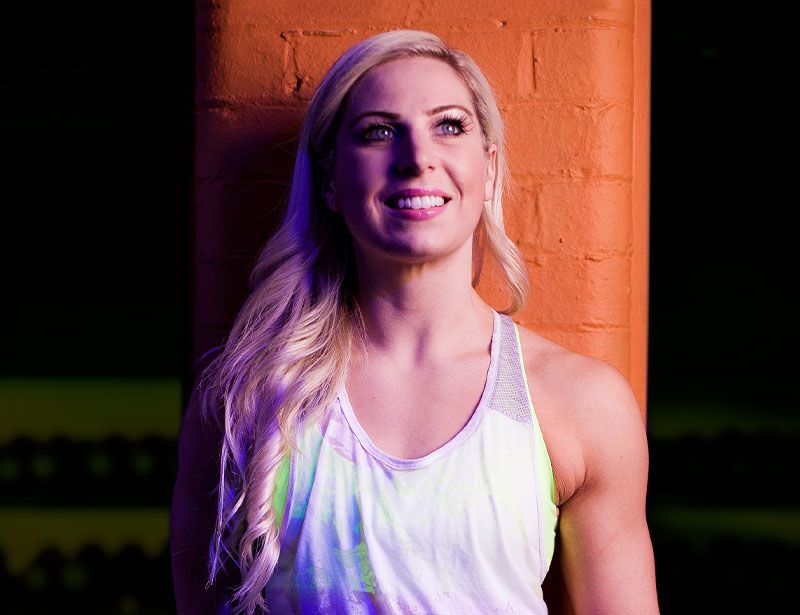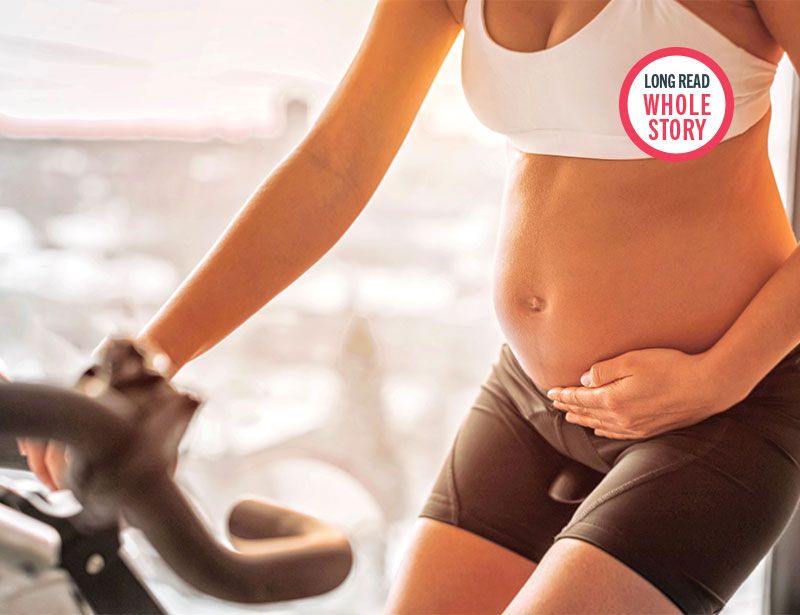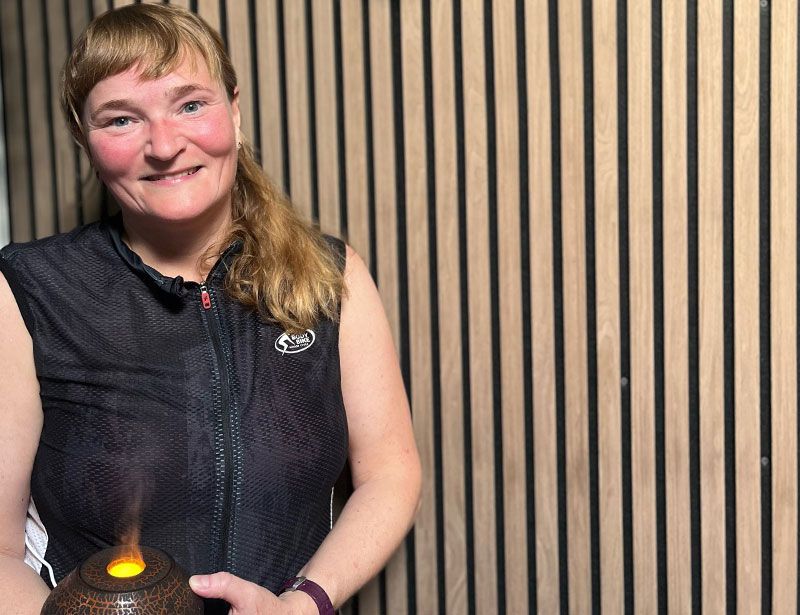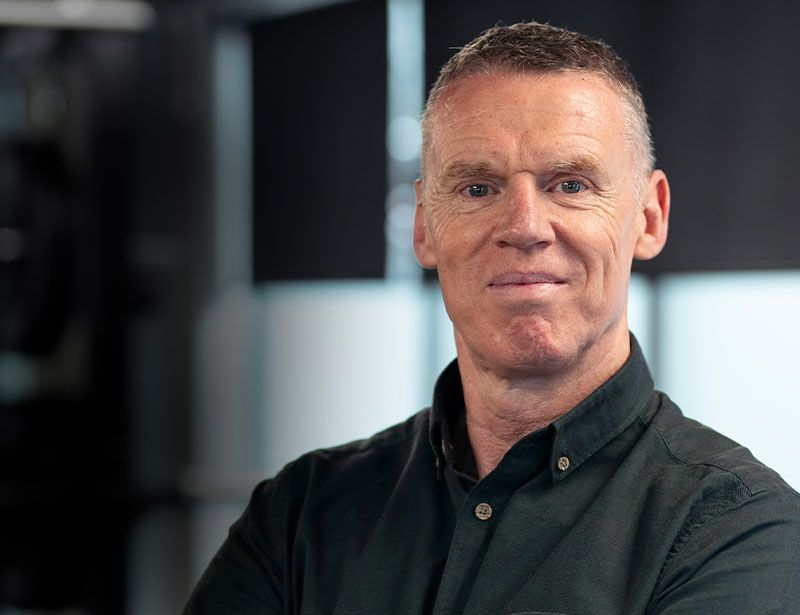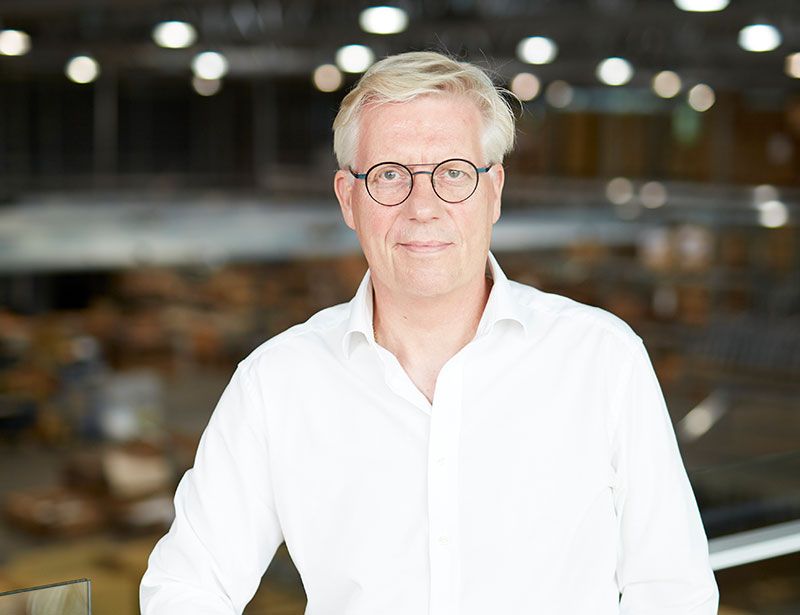Melissa Power
When did you discover indoor cycling?
I started teaching around 17 years ago. I’d never really been into exercise, but I had a road traffic accident where I was knocked off my bike and I used indoor cycling to recover and get my strength back. I loved it and certified as an instructor within a year.
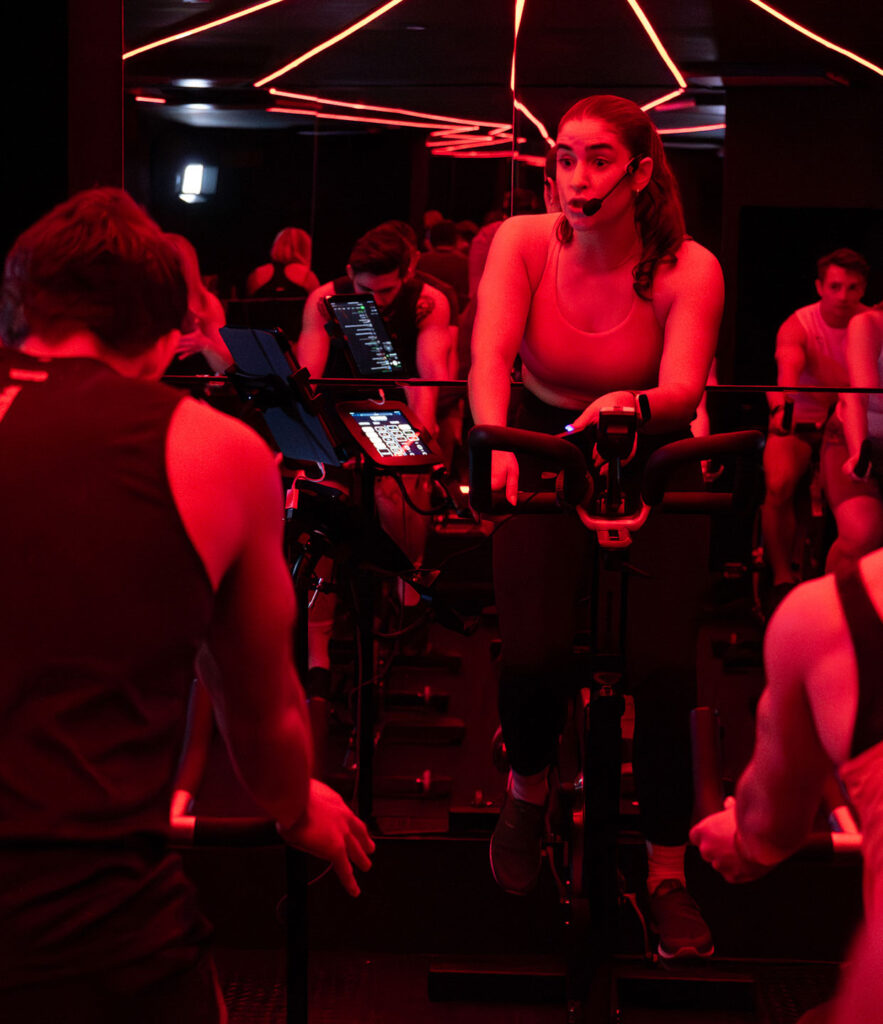
TikTok and Instagram have popularised double time, but it’s unsafe and bad for the joints
Initially I taught in the evenings alongside a day job in TV and radio, but I soon found myself living for the teaching so I quit my TV job. I knew I had to fully commit.
I went around London trying out all the gyms. I did lots of classes, got to know the master trainers and wrote to the clubs I loved to secure teaching spots. It became a full-time passion for me and I ultimately became a master trainer myself.
You then became a training provider…
It was 2017 by this point. I began to notice a lot of people coming into the industry who didn’t really know what they were doing. They had out-of-date or more generalist qualifications and while they could put on a performance, they lacked a basic understanding of the science of cycling.

They’d equate speed with a higher RPM, for example, rather than turning up the resistance. They’d direct participants to go on ‘vibes’ rather than telling them what gears to use; can you imagine letting someone pick up whatever weight they felt like on the gym floor? In many cases, the bike was incidental – no more than a prop on which to perform their choreography.
Too often these days, attending a class is about buying a ticket to a show. It’s giving indoor cycling a bad name.
And so I decided to write my own indoor cycling certification, focusing first on teaching people to instruct safely – with a real knowledge and understanding of cycling – before adding musicality and choreography.
I’d been instructing for a long time by this point, but crucially I had never stopped learning, immersing myself in all the research and science I could find. Even so, designing and writing the certification was harder than writing my dissertation! It’s not just the content you have to create but also the delivery, lesson plans, programming structure, all the little details and tips.
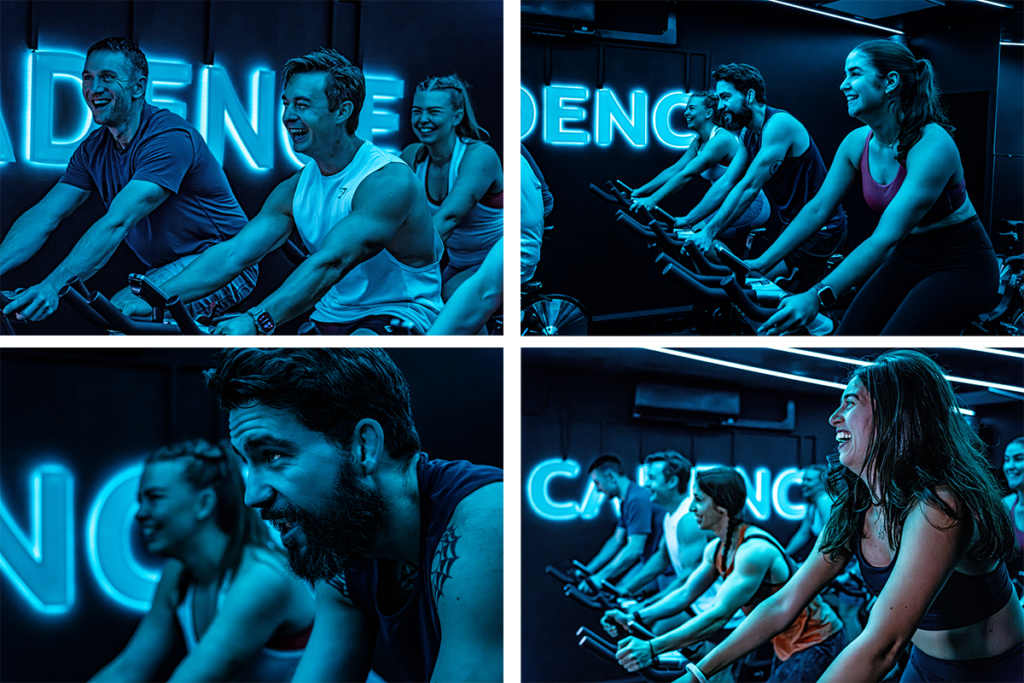
I also constantly evolve and add to it: it’s amazing how much it’s changed since I first launched it in September 2018. It’s effectively a masterclass now, with learnings for all instructors no matter how experienced they are; we’ve had master trainers tell us it’s all brand new knowledge for them.
We’ve certified about 600 instructors so far and I’m delighted to say the MPowered Training Academy has a CIMSPA rating of Enhancing, its highest level of accreditation.
What’s different about your approach?
There are two main things going on in the world of indoor cycling that I’m fighting against, both through MPowered and our new Cadence studio, which opened in October 2023.
The first is unsafe riding, by which I’m primarily referring to anything above 105 RPM. TikTok and Instagram have popularised double time, but it’s unsafe and bad for the joints. It might be very video-able, but members can’t keep up with it. Even instructors… I’ve had so many on my course tell me what a relief our approach is, because they can’t do the choreography some studios are asking for.
We help people fall in love with indoor cycling again by making it something everyone can do, not just the instructor and the front row
We believe that simplicity is sophistication. We teach people to instruct safely, removing the complex choreography and showing them new ways to make a workout exciting.
The second thing I’m fighting against is the way indoor cycling has become all about the superstar instructor. Of course you want a great instructor, but what actually defines ‘great’ is how they make participants feel. It absolutely isn’t about using class to show off what they can do: double time, one-handed choreography and so on.
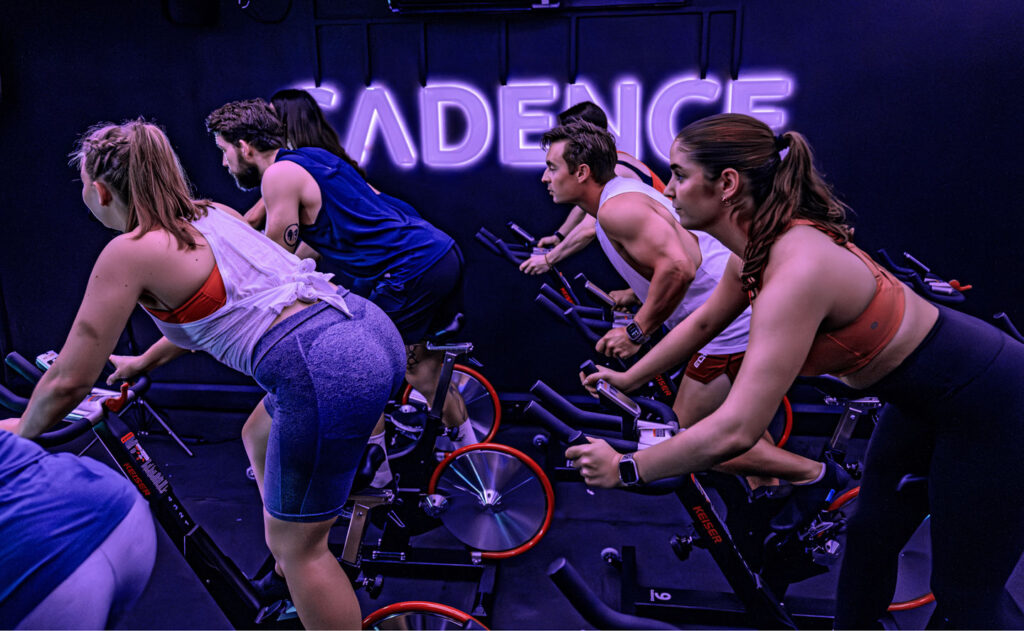
Too often these days, attending an indoor cycling class is about buying a ticket to a show. It’s giving indoor cycling a bad name. So much so that at Cadence, we aren’t only competing with other studios and other leisure activities, but are also having to persuade people to give indoor cycling another chance after their negative experiences elsewhere.

Tell us more about Cadence.
We help people fall in love with indoor cycling again by making it something everyone can do, not just the instructor and the front row. We make everyone feel welcome.
I’ve worked out the exact cadences that different types of training should be ridden at to achieve the best results
The reviews say it all. We’re getting so many comments along the lines of “I never thought I’d enjoy indoor cycling again”, while Time Out said: “Cadence is doing things differently. If indoor cycling scares you, this is the place to start.”
It hasn’t been without its challenges. We did it all ourselves – my partner Chris and I – with no investment other than my life savings. We found out I was pregnant the day we signed the lease. And we simply hadn’t anticipated the total market dominance of ClassPass. We’ve had to sign up and we’re getting regular riders through the platform, but the payments we receive are still so low, even for high-demand classes.
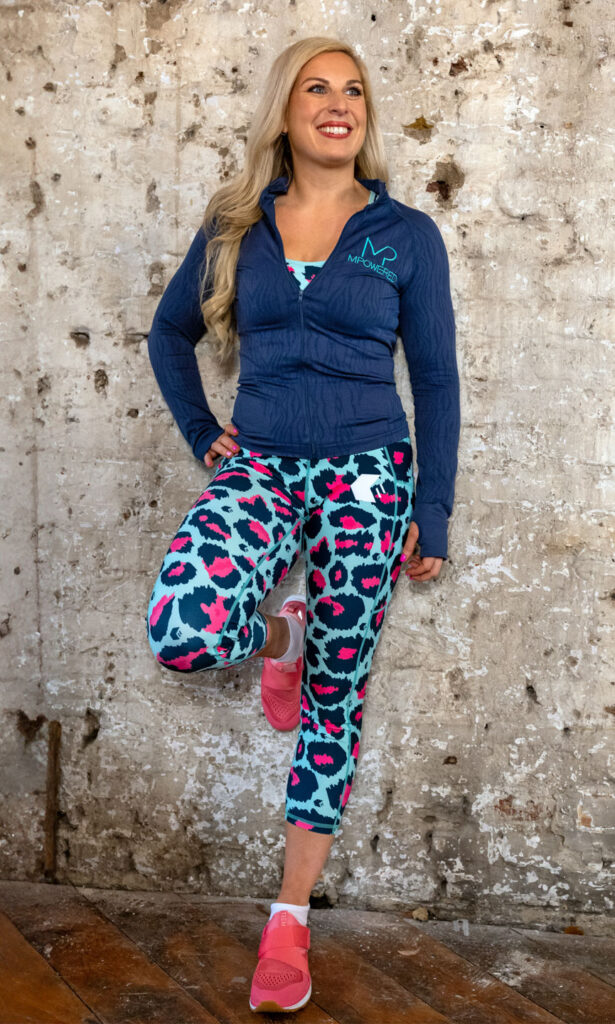
Nevertheless, I’d always dreamt of having my own studio – building a community around my ethos of ‘everything we teach, everyone can do’ – and that’s what we’re doing.
Located in the residential north London area of Crouch End, ours is a small studio of 14 bikes. It doesn’t have posh changing rooms, but it does have the best team of instructors in London, all of whom have come through MPowered, then the Cadence Academy.
I compare Cadence to a Michelin-starred restaurant, where people go for the high-quality food prepared by top chefs rather than for the surroundings. At Cadence, people come for the quality of the classes delivered by fantastic instructors.
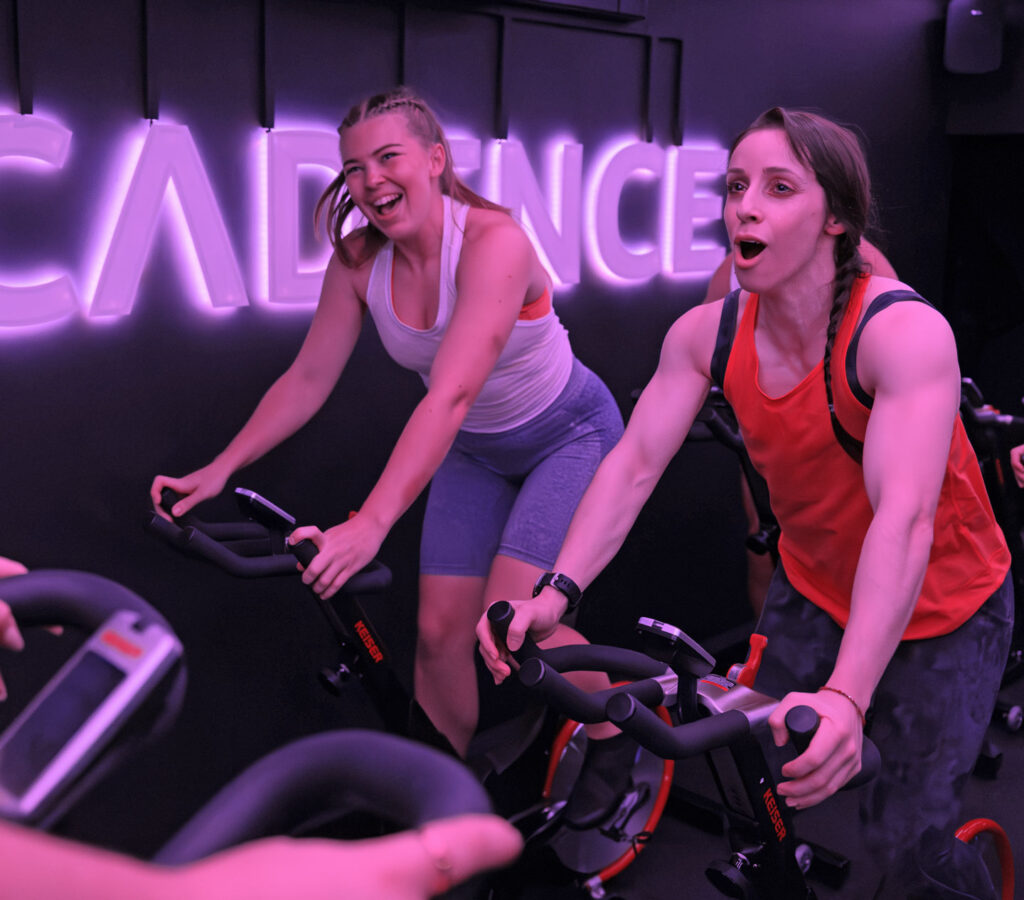
Tell us about your programming.
Our programmes are designed scientifically but delivered accessibly. We modify around the individuals in the room and give options so everyone leaves feeling positive. Even when I was two days from giving birth and honestly pretty uncomfortable, I was able to do our classes.
Our Signature workouts are fun and accessible for all levels – a combination of rhythm and power, using choreography mostly as a break from power. We don’t explain it in this scientific way, but we might have a three-minute power track at threshold, then a two-and-a-half-minute choreography track in the aerobic zone, then maybe a minute of VO2 max.
I won’t give away our secret sauce, but I’ve worked out the exact cadences that different types of training should be ridden at to achieve the best results. It’s why we always design the programme first, then create the playlist. It’s very hard to do it this way round, but the music has to support the exact cadences we need. It makes me a nightmare to watch TV with: I’m forever pausing programmes to Shazam the music!
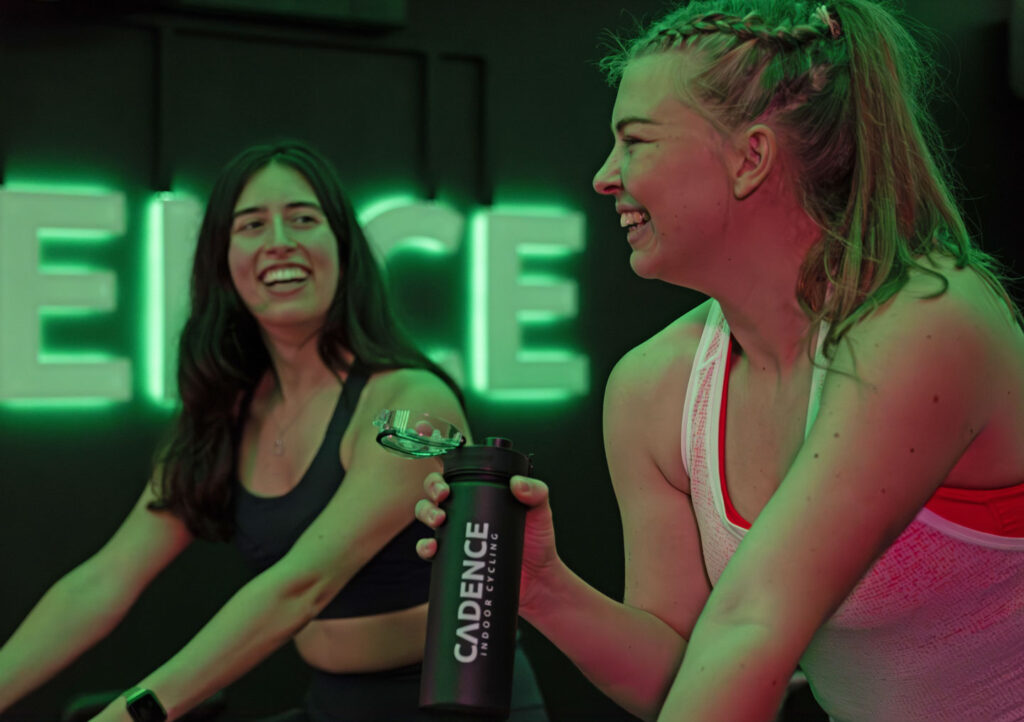
Zones is our more technical, performance-focused ride, but we still teach it accessibly.
And then there’s Cadence Karaoke, which is great fun but also rooted in science. There’s a reason why Taylor Swift trained for her Eras tour by singing the full three-hour set while running on a treadmill: singing while exercising has been shown to significantly improve stamina, fitness and aerobic capacity.
In Cadence Karaoke, we alternate between one pure cycling track, then an easier track where we sing while we cycle. It’s a labour of love, as every class takes hours to prepare: the programming, music selection, creating the video and lyrics for the big screen. But it’s an amazing experience and hugely popular.
What’s next for you?
We launched our Academy internationally in mid-July, with the first course set to take place in Dubai in November. New York, Toronto, Berlin, Amsterdam and Barcelona will follow.
We dream of taking the MPowered method globally. We see it as a movement, building an army of people who will bring indoor cycling back to where it needs to be.
We’d also like to expand Cadence, starting in London and then potentially internationally.
The best indoor cycling classes are the worst ones to put on TikTok… We can’t let indoor cycling become a fad.
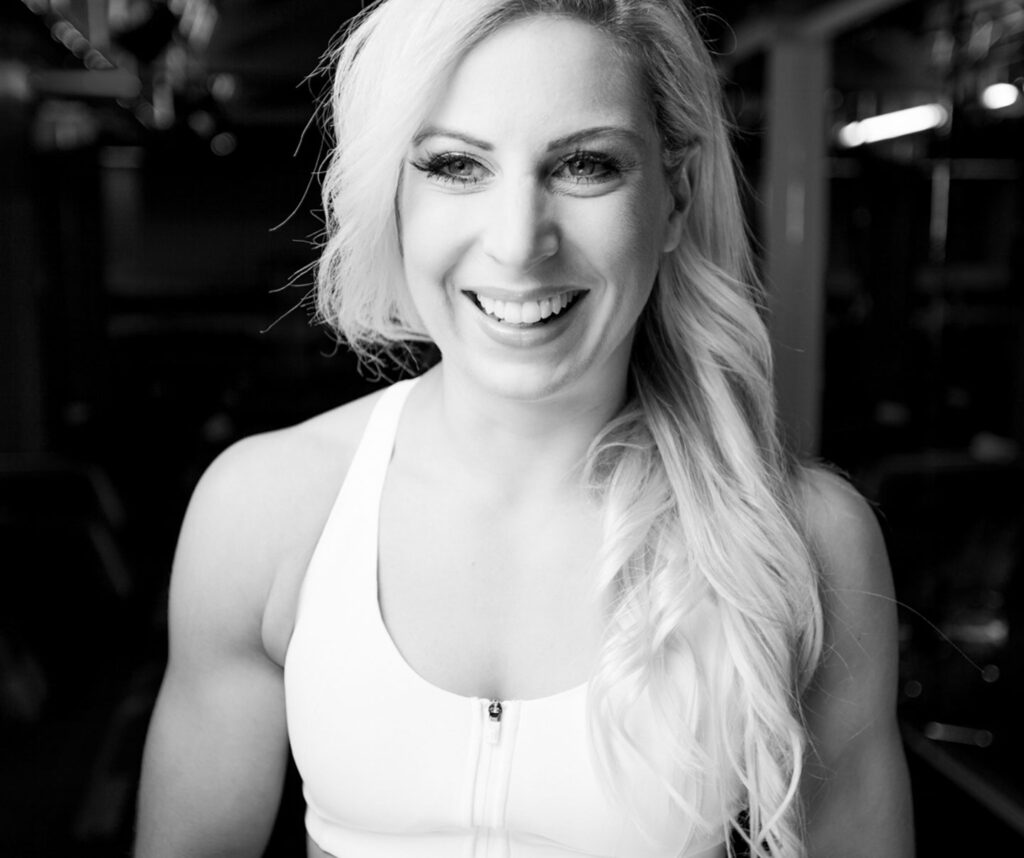
What’s your advice to the sector?
The best indoor cycling classes are the worst ones to put on TikTok. We need to scrap double time and complex choreography to focus on safety and simplicity. We need to put power back in the mix so it isn’t just dancing on a bike. We can’t let indoor cycling become a fad.
I’d also like to see the demise of the superstar instructor, so members are paying for a class, not a show. It’s fine for members to admire an instructor, but it should be because that instructor has come over to help them set up, made them feel comfortable, seen who’s in class and offered alternatives so everyone can do the workout. True superstars are defined by their empathy, not their performance.
Bumps on bikes
“When discussing exercise during pregnancy, and indoor cycling specifically, it’s good to break things down by trimester,” says Dr Lou Atkinson, Schwinn master trainer and pre- and post-natal indoor cycling expert.
“Obviously every pregnancy and every body is different, but different things happen physiologically at different points in a pregnancy – and the good news is that indoor cycling is pretty much the perfect answer to all these changes.”
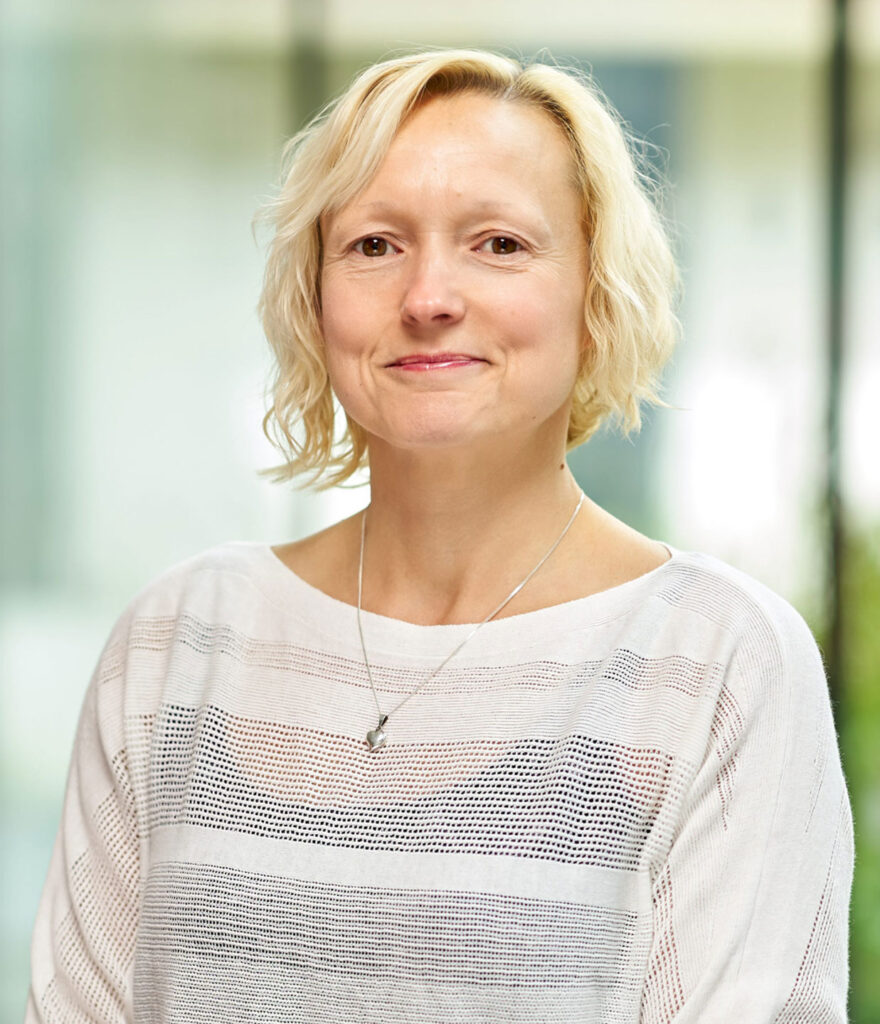
1st trimester
“Almost immediately in the first trimester, hormones kick in to loosen the blood vessels. However, it takes a while for the volume of blood to catch up and fill them again. The result is vascular underfill, which can cause tiredness, nausea and light-headedness; there isn’t enough blood taking oxygen to muscles around the body.
“Indoor cycling is good in the first trimester: you can easily adjust the intensity without anyone else noticing”
“Especially if you’re used to working out at a relatively high intensity, you can notice a big change in your performance – often before you even know you’re pregnant – with your body not responding in the way it normally does.
“Indoor cycling is good in this trimester, because you can easily adjust the intensity without anyone else noticing. You’re already sitting down if you start to feel light-headed, too, and can easily stop and take a breather without getting in anyone’s way.”
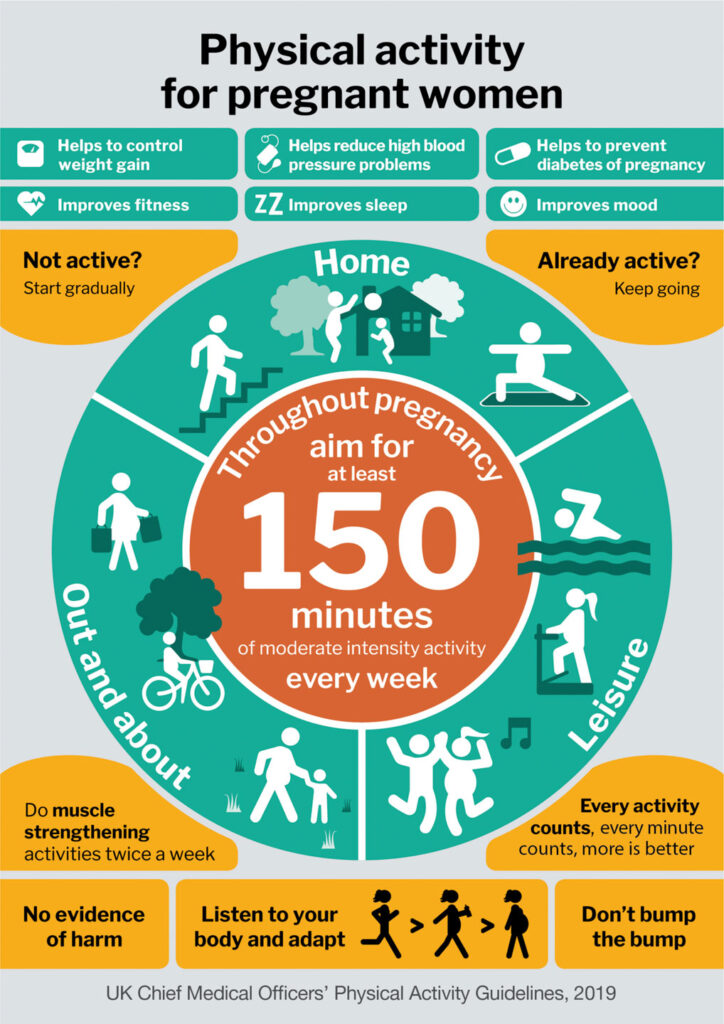
2nd trimester
“In the second trimester, blood vessels and blood volume should be back in sync, giving some people a burst of energy. However, the hormone relaxin loosens the joints, which you do need to be a bit cautious about. Joints may go through a greater range of motion during activity, putting additional strain on the surrounding tissues.
“Postural changes also start to take effect as the bump develops and the pelvis tilts forward. This can cause lower back pain and compensation throughout the body – including neck and shoulders – as well as additional weight through the legs.
“Again, indoor cycling is a great option. As a fixed and uni-directional pattern of movement with no impact, you’re unlikely to move your joints past the point you normally would – plus it’s simple to master even when you have baby brain!
“Lifting the handlebars makes space for the bump and reduces the strain on core muscles”
“You’re also sitting down, taking the weight off your legs and feet. And you can adjust the bike set-up around your changing body: lifting the handlebars makes space for the bump and reduces the strain on core muscles by raising the angle of the body.
“From around 20 weeks, as you get bigger and the baby starts to move around more, the general advice is to spend more time in the saddle, both from a stability perspective and for the sake of the joints. But of course, that’s an individual choice.”
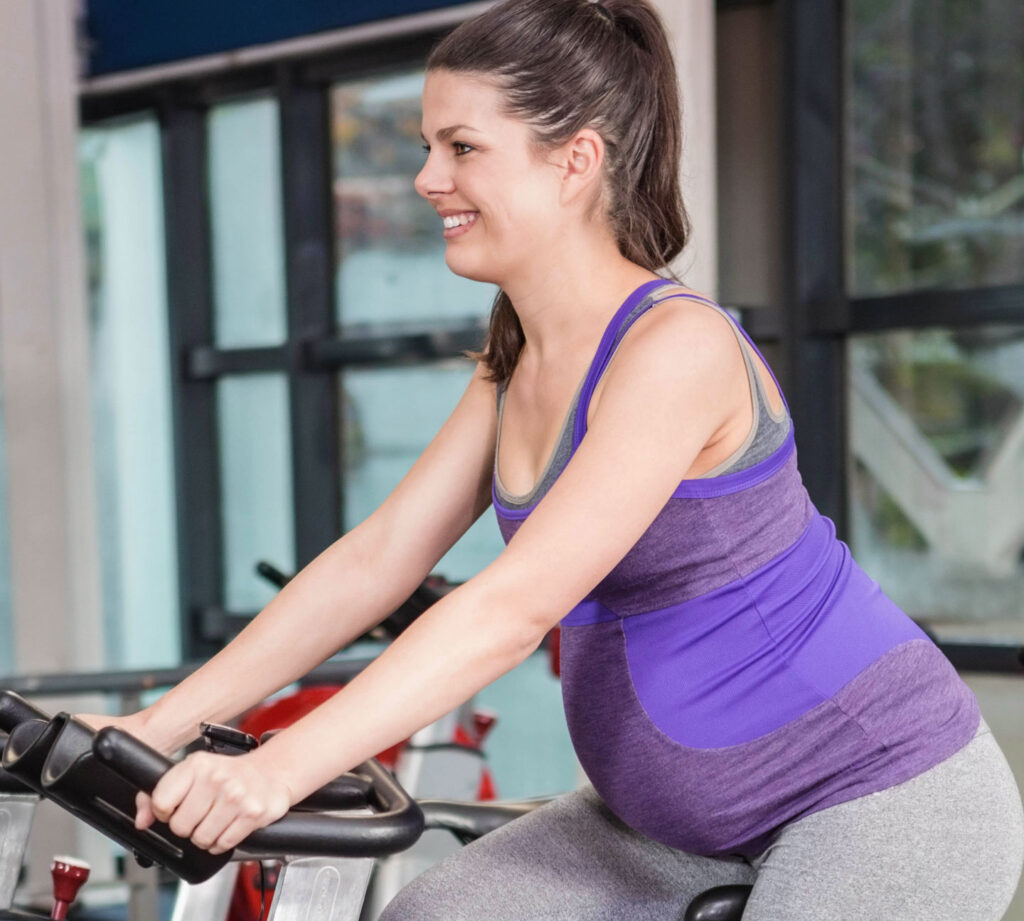
3rd trimester
“In the third trimester, pregnant women should be treated as if hypertensive. That said, small modifications such as limiting exercise with arms overhead will suffice in most cases. After all, exercise can also help maintain optimal blood pressure.
“There’s now even more weight gain, exacerbating the postural changes, and it’s really important not to bump the bump.
“So, indoor cycling still works well. Our advice is that you can keep cycling for as long as the bump fits in without touching any of the bike’s protruding parts.”
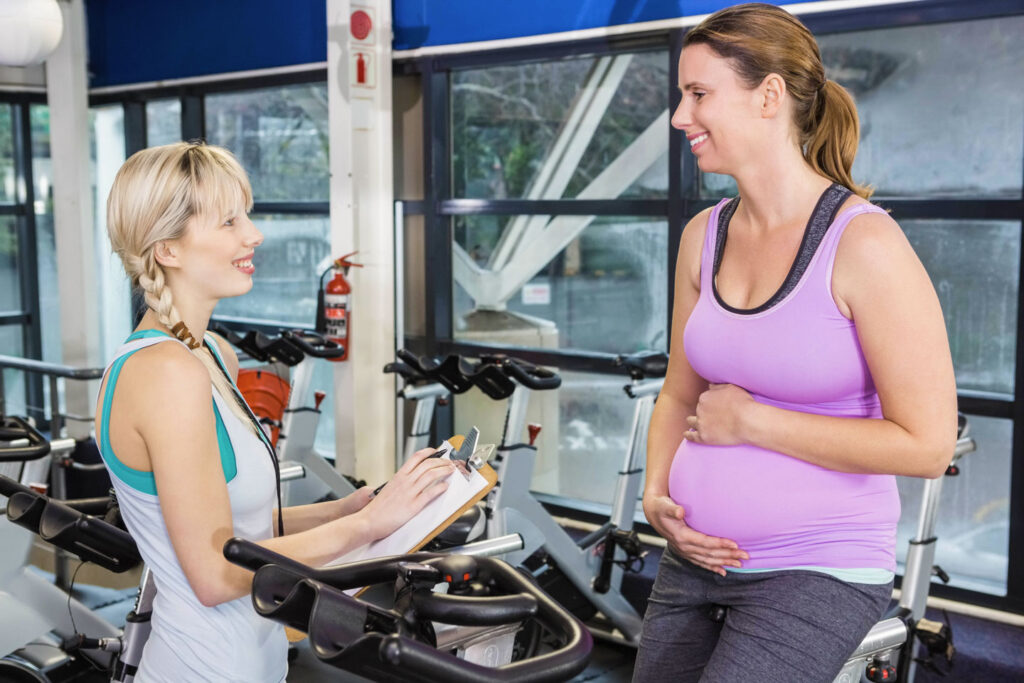
Is it really safe to cycle?
“It’s important to attend regular antenatal checks to ensure there are no medical issues – such as pre-eclampsia or very high blood pressure – that mean you shouldn’t exercise. Assuming there are no such complications, it’s safe to be physically active and indoor cycling is a great option for all the reasons we’ve already mentioned.
“The overall guidelines are now very clear, with two main pieces of advice.
“If you exercised regularly before you were pregnant, it’s fine to keep going, aiming for the usual 150 minutes’ moderate activity a week. Do also recognise that less is still beneficial and more is also fine if you’re used to it and it feels good.
“As a coach, you have a balance to strike between duty of care and respecting everyone’s right to make their own choices”
“If you weren’t regularly active before, it’s fine to start during pregnancy and there are huge benefits of doing so, both for yourself and your baby. But start slowly, perhaps 15 minutes of low to medium intensity, and build up.
“The only things that are really contraindicated during pregnancy are extreme heat – hot yoga, outdoor runs in the heat of the day, swimming pools above body temperature – and anything that could cause trauma to the bump through contact, collision or falling. Most women self-regulate as far as these risks go, which is fine provided they understand what the risks are. It’s why the Get active questionnaire for pregnancy is such a good tool (see Additional Resources info box below).
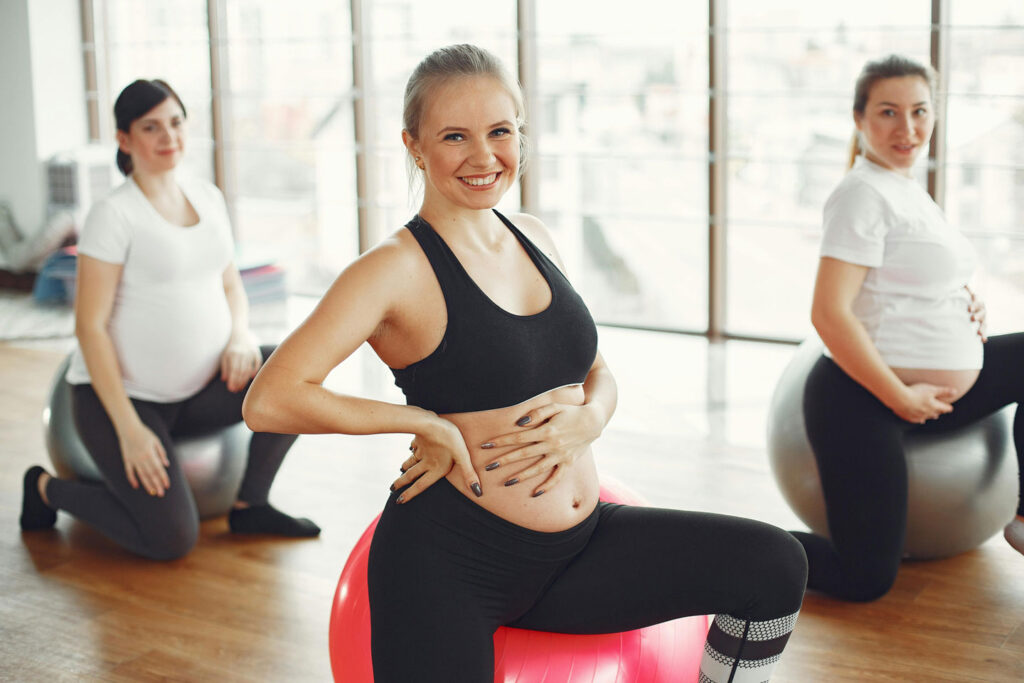
“Rather than the old approach where alarms would go off the moment a PAR-Q found a member was pregnant, this new approach sees women complete their own questionnaire to discuss with their healthcare professional. It gives each individual the information they need to understand their own risks and make an informed decision, instead of being told ‘yes’ or ‘no’ based on a few tick boxes.
“That’s great, because once contraindications are ruled out, women can be confidently active while pregnant. There’s no evidence of any increased risk of things like miscarriage, stillbirth, preterm labour or limited growth of the baby. The risks really are hugely outweighed by the benefits.”
What are the benefits?
“Being physically active while pregnant reduces the risk of a number of possible negative outcomes. On a day-to-day basis throughout your pregnancy, you’ll sleep better and suffer less discomfort from things like back pain and varicose veins. You’re less likely to need an emergency C-section or assisted birth and more likely to have a shorter labour with a vaginal birth. You’re less likely to suffer from post-natal depression and your baby is less likely to be large for its gestational age, in turn reducing the risk of conditions such as obesity in later life.”
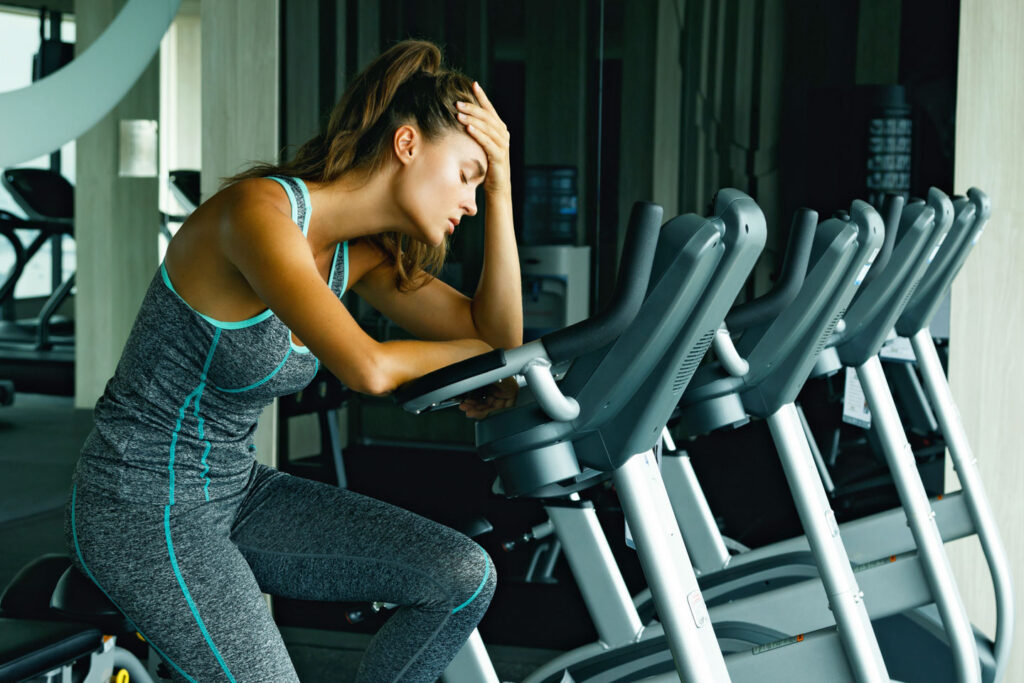
What about post-natal cycling?
“With plenty of relaxin still in the body, indoor cycling remains a great option for the joints. If you have heavy breasts from breastfeeding, indoor cycling is also more comfortable than some other activities as you don’t move around too much. Plus simple moves are always good if you’re sleep-deprived and have brain fog!
“The guidelines in the UK are to wait until your six-week post-natal check before you do any structured exercise – walking is great in the meantime – or 12 weeks if you’ve had a C-section. When you do start, build up slowly, listen to your body and be kind to yourself. If there’s any pain, stop. If you’re taking more than a day or two to recover, you’ve probably gone too hard, too fast.
“Your posture on the bike may still be different from how it was before you were pregnant, so take time on the set-up and ensure you feel supported. If the saddle isn’t comfortable, give it another week or two.
“Remember you’re still working with a healing body – one that’s potentially significantly and even permanently different from your pre-pregnancy body.”
What’s your advice to coaches?
“Don’t be scared if someone tells you they’re pregnant. It’s a normal, natural part of life in which being active brings huge benefits and limited risks that are easily managed in an indoor cycling class.
“Help the individual understand what they want from class and take that onboard so you can support them. It will generally be less about fitness goals and more about staying healthy, mental wellbeing and what’s good for them and the baby. Encourage them to focus on this. Let them know that even shorter, less frequent, less intense workouts are still great. Let them know it’s OK if they want to leave after 20 minutes, especially while they’re slowly building up to doing more. Direct them to take the bike near the air conditioning unit and to drink plenty of water.

“It’s more tricky when someone who’s used to being fit doesn’t appear to be self-regulating, pushing themselves as hard as they’ve ever done. As a coach, you have a balance to strike between duty of care and respecting everyone’s right to make their own choices.
“One tip is to reassure them that they won’t lose a huge amount of fitness by slowing down for a few months. You can also explain how relaxin stays in the body for a while after pregnancy – especially if they breastfeed – and how this can give a post-partum performance boost to help them get back into it.
“Being active brings huge benefits and limited risks that are easily managed in an indoor cycling class”
“Standard good practice also applies here. If your normal approach is to offer options and modifications in class, that will benefit pregnant participants. Getting to know every participant as an individual also means private conversations can be had in the studio without it seeming strange.
“That’s crucial, because if someone tells you about their pregnancy in the early stages – seeking your advice and support to stay safe and comfortable – it’s a huge privilege and a secret to keep. I’ve had women tell me about pregnancies before they’ve even told their families. This is not your information to share in any way, but it is a wonderful opportunity to reassure them of their safety and how normal it is for their body to do strange things!”
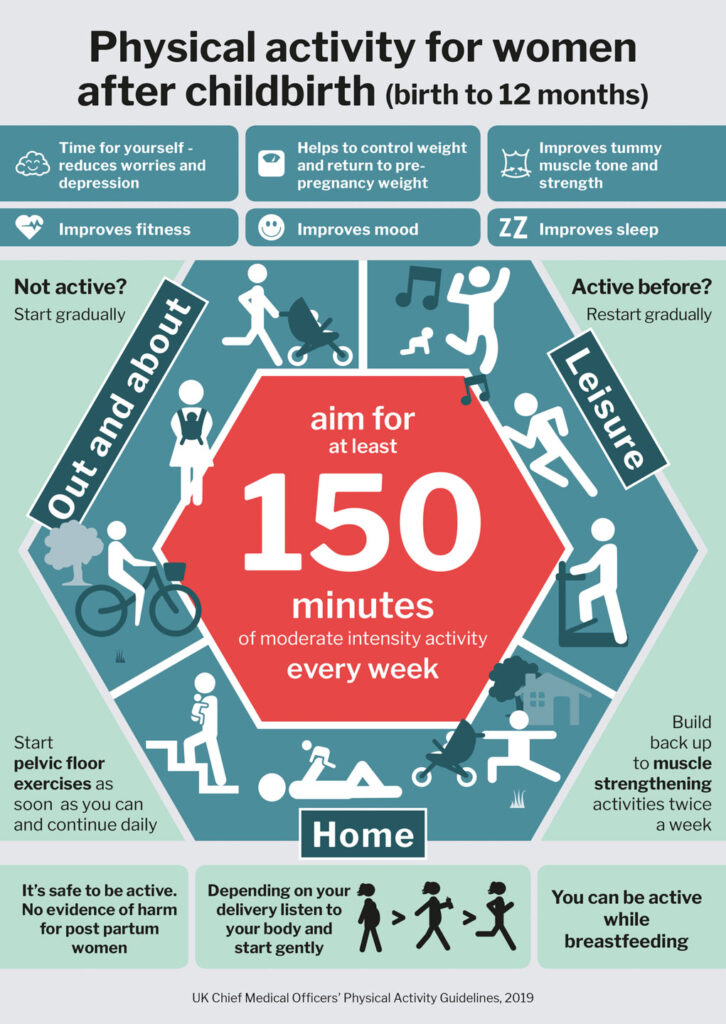
How about post-natal coaching?
“Most of these women will now have different priorities, so treat everyone as an individual. Many of those who used to focus on achieving maximum fitness will now exercise to be healthy so they can be a good parent; to feel in control of their body again; and to support their mental wellbeing.
“They will likely be looking to connect with the person they were and still are. Encourage them to enjoy this adult ‘me time’ and reassure them that they don’t have to be straight back on top of the leaderboard.
“Crucially, I strongly advise avoiding cues that refer to pre-pregnancy bodies or getting back into that old pair of jeans. It’s psychologically damaging and sets women up for failure. Many will never have the same body again. They need to know that’s OK.”
“These are still normal adults who just happen to be pregnant. A mainstream indoor cycling class is perfectly safe for them.”
What’s your advice for clubs?
“As a facility, it can be hard to justify dedicated ‘bumps on bikes’ classes, especially at the peak times most women will want: they’re likely to still be working during the day and too tired to come at 8.00pm.
“And as I say, these are still normal adults who just happen to be pregnant. A mainstream indoor cycling class is perfectly safe for them.
“However, pregnant women often tell me they’d ideally like to be in a class with other pregnant women, run by a specialist coach – to be among those who really understand them. If as a club you can find a way to make this work commercially, it would definitely be the ideal scenario for the women.”
Additional Resources
-
-
-
-
-
-
- Dr. Lou Atkinson is available to deliver workshops on pre- and post-natal indoor cycling for gyms and instructor teams.
Find her on instagram: @getmefitlou - Exercise and Physical Acticity During Pregnancy and Postpartum – a book of evidence based guidelines (e-book and single chapters also available to purchase)
- Active Pregnancy Foundation resources library
- Get active questionnaire for pregnancy – forms & guidance (UK versions)
- CIMSPA-accredited free e-learning module suitable for health and exercise professionals
- Dr. Lou Atkinson is available to deliver workshops on pre- and post-natal indoor cycling for gyms and instructor teams.
-
-
-
-
-
Scent-sational
“To those who question the power of aromatherapy, I say come and try it,” says Signe Fjord, a law school graduate turned life coach and indoor cycling instructor, who has brought aromatherapy to her classes under the banner of Aroma Bike.
“I keep it low key and I don’t shout too loud about it, because I know people might question it. In any case, it’s more profound than I can find the words to explain. But when you experience it for yourself, you understand.”
“It’s more profound than I can find the words to explain, but when you experience it for yourself, you understand”
This pragmatic approach makes sense, as in spite of many studies over the years showing the diverse benefits of aromatherapy – from stress reduction to improved sleep, pain relief to better digestion and more – many institutions still deem the evidence inconclusive.
Yet we know we sleep better with lavender on our pillow; we’ve felt how aromatherapy heightens a massage experience; many of us will have used tea tree oil for its antiseptic qualities; and in Australia, where Fjord used to live, “eucalyptus oil is used for everything!” She adds: “Aromatherapy is a millennia-old practice that’s naturally part of our daily routines.”
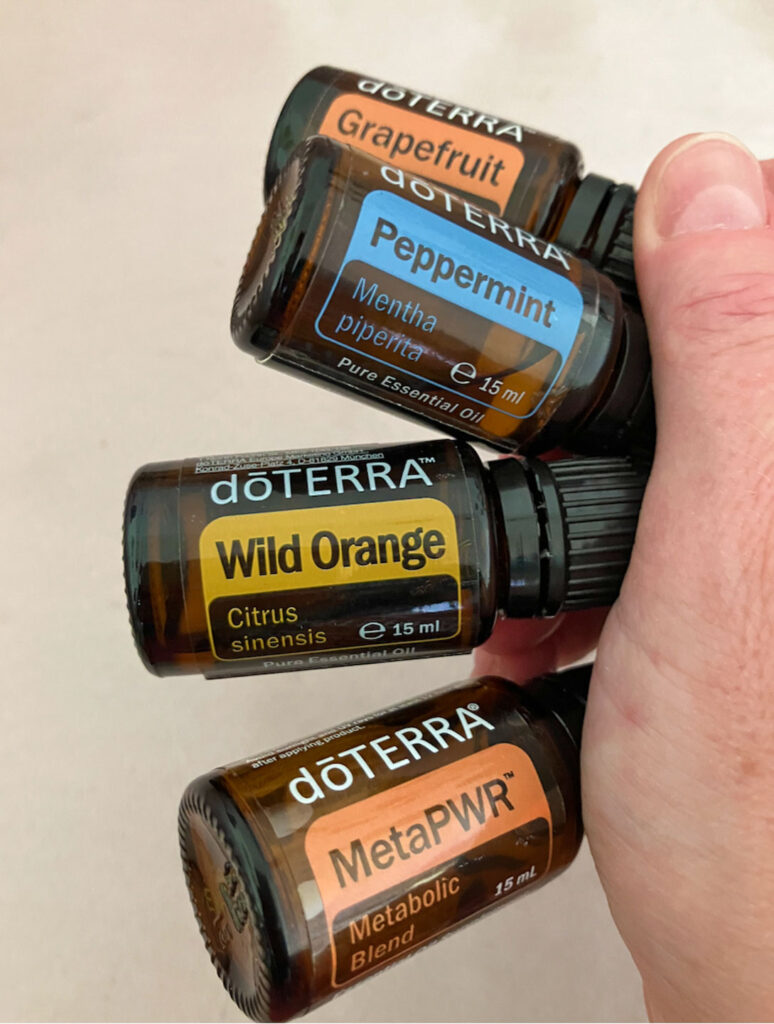
Powering performance
Fjord continues: “People mostly know about the use of aromatherapy in relaxation. Fewer people know about its impact on performance.”
She points to a US pilot study conducted among healthy male students and published in 2018, which set out to “investigate the acute effects of peppermint oil ingestion on exercise performance, in particular the ventilatory threshold”. Why? Because the ventilatory threshold – a percentage of VO2 max and, in layman’s terms, the point at which higher-intensity exercise causes hyperventilation – “improves with endurance training and has been shown to predict maximal endurance performance”.
“People mostly know about the use of aromatherapy in relaxation. Fewer people know about its impact on performance.”
The cycling-based study found the ventilatory threshold occurred at a significantly higher percentage of VO2 max following peppermint oil ingestion, without affecting VO2 max itself. In other words, it gave riders more scope to push themselves during training.

“One of my elite cycling friends, who has qualified for the amateur World Championships, now puts a drop of peppermint oil in his water whenever he’s cycling and rubs some on his chest to help him breathe easier,” says Fjord. “Most of my new customers are now male cyclists who want to perform better.”
That said, Fjord is quick not to make overly bold statements or any medical claims. “Mostly, Aroma Bike is about bringing additional layers of experience to a class, using uplifting oils that give people an additional reason and reward for attending in person.
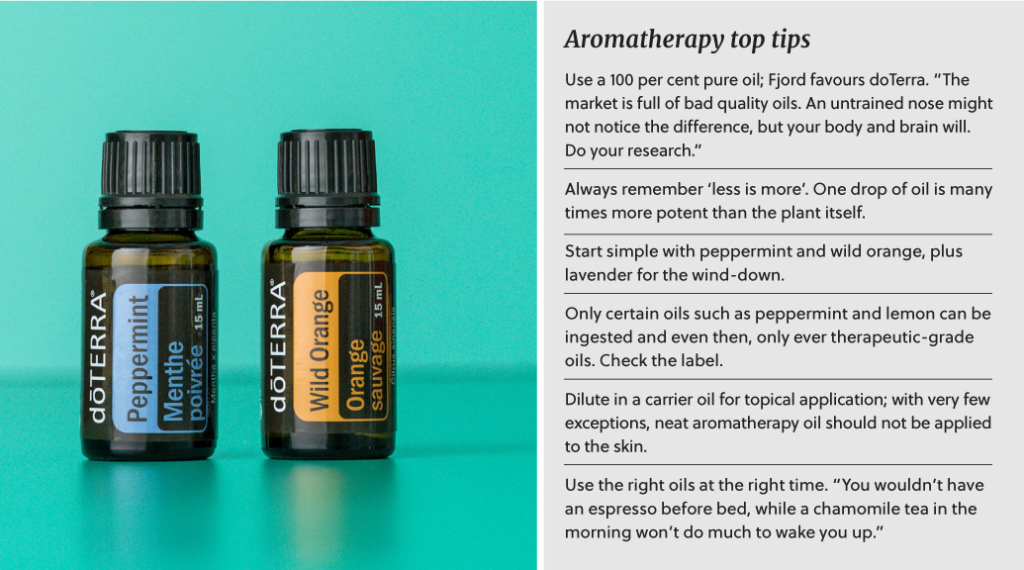
“I like to offer as much benefit from every workout as I can, layering on the goodness while remembering that with aromatherapy, less is more: one drop of wild orange in someone’s palm after a stressful day can genuinely be the best moment of their day.”
Uplifting oils
Aroma Bike was initially born of need, says Fjord. “When I moved from the Copenhagen area to the north of Denmark, I began instructing at a small corporate gym where the cycle studio smelled pretty bad! Diffusing aromatherapy oils helped address that. But the gym manager quickly came onboard when I used doTerra’s Deep Blue oil blend to successfully relieve the tension in his neck; doTerra is the oil brand I use.”
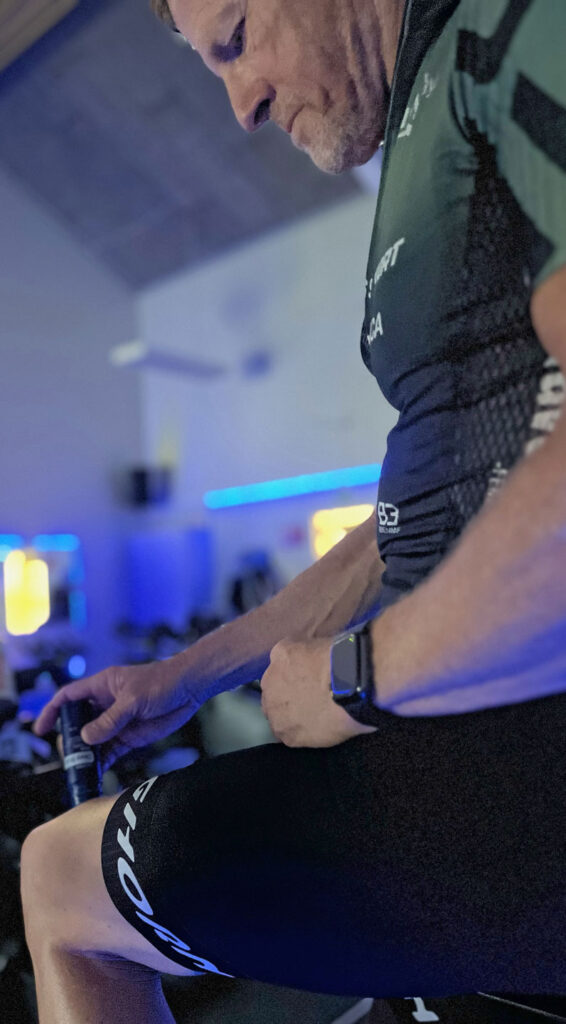
She continues: “I’d always used oils here and there in class, but the north of Denmark is all about ‘hygge’, which gave me licence to develop a more complete Aroma Bike concept.
“I theme my classes and occasionally do something unpredictable, creating new experiences with unusual oils to surprise people. But mostly I keep it simple, creating workouts using Intelligent Cycling and then layering on oils that everyone will recognise.
“For example, in yesterday’s class I had three diffusers in the room – one drop of oil per diffuser so as not to overwhelm – and used my go-to blend of wild orange with peppermint. It’s a lovely blend to create a welcoming environment and brings you back to your natural balance; it’s amazing how the body knows how to heal itself if you give it the right tools.
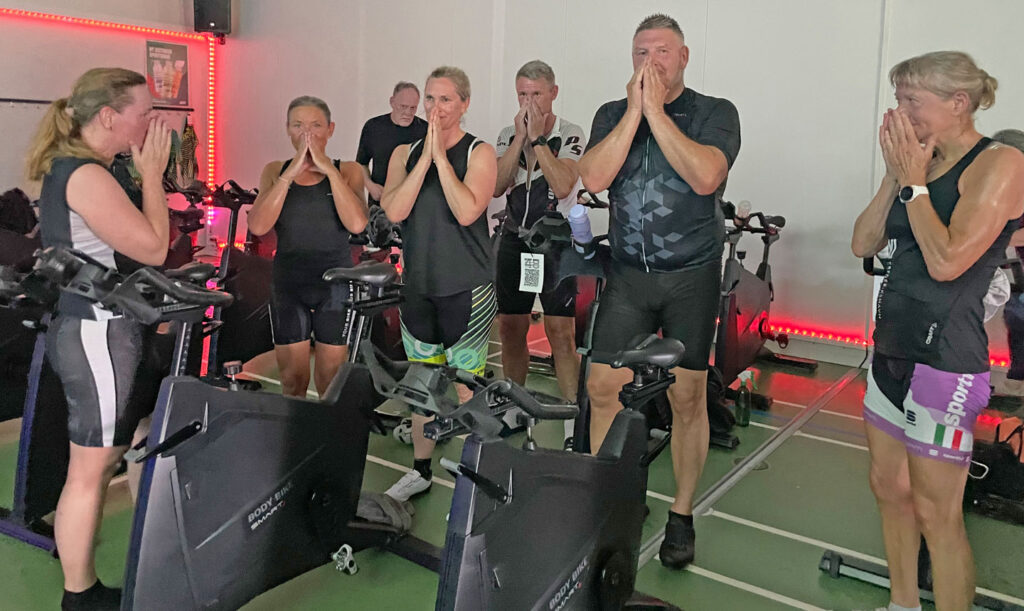
“I then began the class with a drop of eucalyptus oil onto each rider’s palm for the warm-up. Eucalyptus is a great all-rounder, from helping you breathe to creating a sense of what the Japanese call shinrin yoku – forest bathing – the refreshing, feelgood sensation of being in nature. I looked participants in the eye and we took three deep breaths together. It’s a profound way to meet and greet each individual during the warm-up, focusing on positive thoughts. ‘I see you. I welcome you. You are important. You matter.’
“Towards the end of class, I dropped a balancing, grounding blend onto everyone’s palm to help them wind down. And then after class – it’s a really social gym where everyone stays behind to chat – I had peppermint oil and Deep Blue on-hand for tired muscles.”
“Aroma Bike brings layers of experience to a class, using uplifting oils that give an additional reward for attending in person”
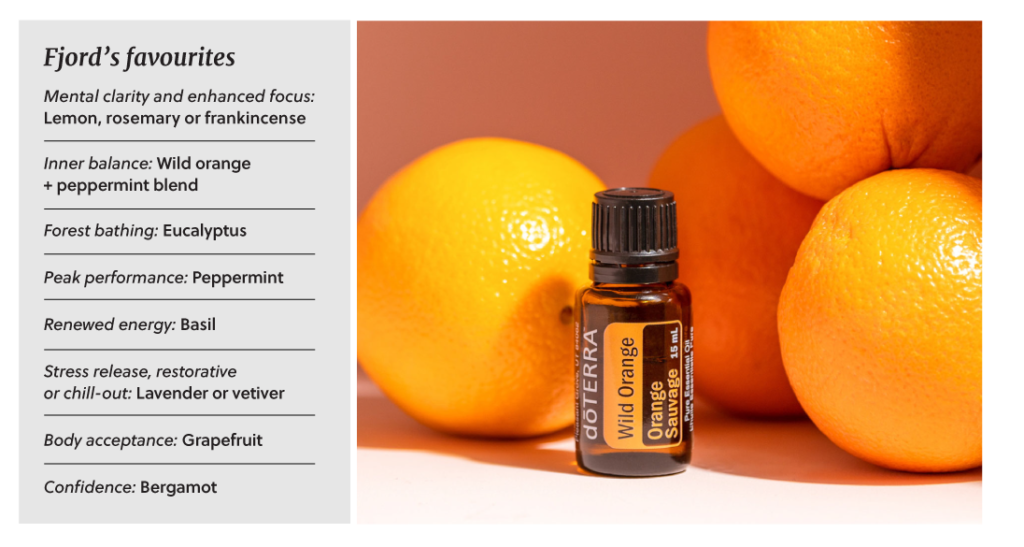
Expanding the concept
Since she began at the gym a year ago, uptake of Aroma Bike has been so positive that Fjord also now runs aromatherapy mindfulness classes, using diffusers and topical applications to promote peace and balance. Coming soon, a new spa area will see aromatherapy oils diffused into the sauna.
“Cycling is how I stay connected with myself physically and mentally. Adding aromatherapy takes that a step further still.”
But it all started with cycling. Fjord concludes: “I’ve done many things in my life, but it’s always cycling I’ve come back to. From triathlons in my teens to Ironman aged 20 and an indoor cycling instructor for 14 years now, cycling has been a lifelong passion. It’s how I stay connected with myself physically and mentally.
“I’ve also found it a great way to help people around me be happy. Adding aromatherapy takes that a step further still.”

Brett Sutton
What does Les Mills NZ stand for?
With 12 clubs across the country, Les Mills New Zealand isn’t the largest player in the market, but our 95 per cent prompted brand awareness is the highest of any fitness brand in New Zealand and our membership is as big, or bigger, than others in the market with 50+ clubs.
Our clear purpose gives us meaning and salience in the market. We exist to make humans fit for life, with a vision of being the world’s best fitness engine. We focus on four measurable pillars – join, train, stay, rave – and throughout our team, there’s a culture of showing up and connecting with members.

Research shows us to be the perceived market leader in terms of equipment and facilities, quality of group fitness instructors and personal trainers. In fact, group fitness is a major USP generally: 55 per cent of all club attendances are for group fitness, our instructors are world-class and our large studios – as large as 800sq m in Auckland City – welcome crowds of like-minded people who inspire each other.
“We’re connected by one family that’s truly driven by the purpose of fitness. It makes this a very special place to work”
We’re obsessive about the club environment. The look, the feel, the smell, the sound… it must all come together to deliver an uplifting state change the moment you walk in. And we continue to innovate and redefine what big box means. ‘Boutique in a box’, for example, has elevated the experience and inspired members to try something new.
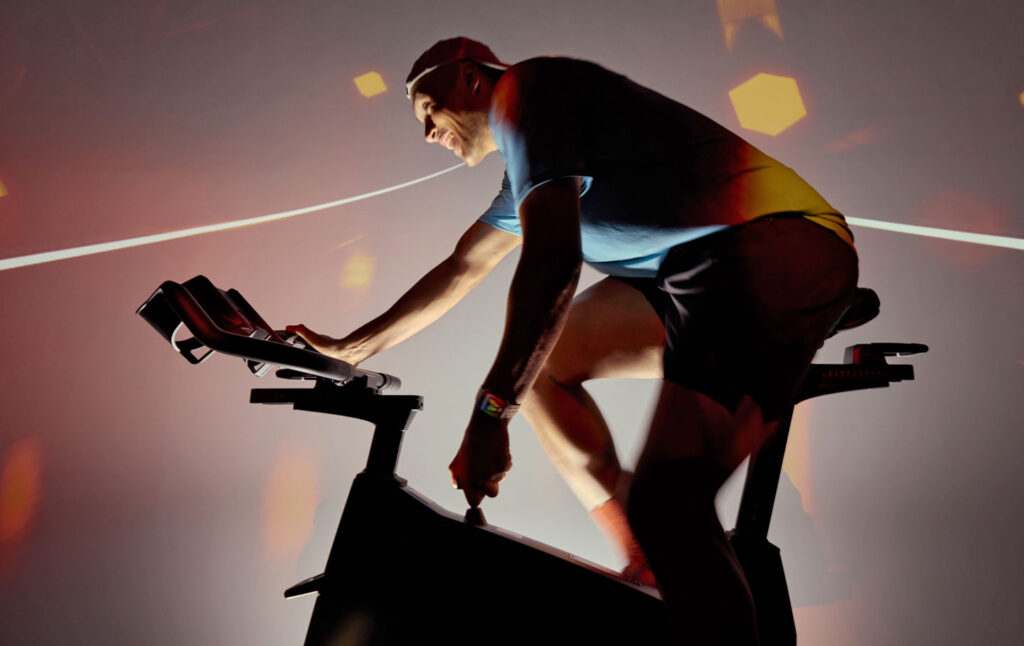
There’s also a great culture within this New Zealand-born business. I’d always aspired to work for Les Mills and I love it. Everyone feels so connected to each other and to the vision.
It all adds up to a great product that’s also great value. We know people will come and go throughout their lives, but if we enter someone’s life early and provide strong, memorable support on their fitness journey, they will come back.
What’s your relationship with LMI?
We have a pretty special sister company relationship with Les Mills International, with both sides of the business majority owned by the Mills family.
“The boutique experience is something we’ve really invested in. Had we not done it, I don’t think the business would be where it is now.”
We have different purposes and objectives – Les Mills New Zealand is bricks and mortar clubs, Les Mills International is programme design – but we’re connected by one family that’s truly driven by the purpose of fitness and that’s deeply invested in every way: spiritually, physically, financially. I believe both sides of the business feel that in a unique way, which makes this a very special place to work. We always know who we are doing it for and why.
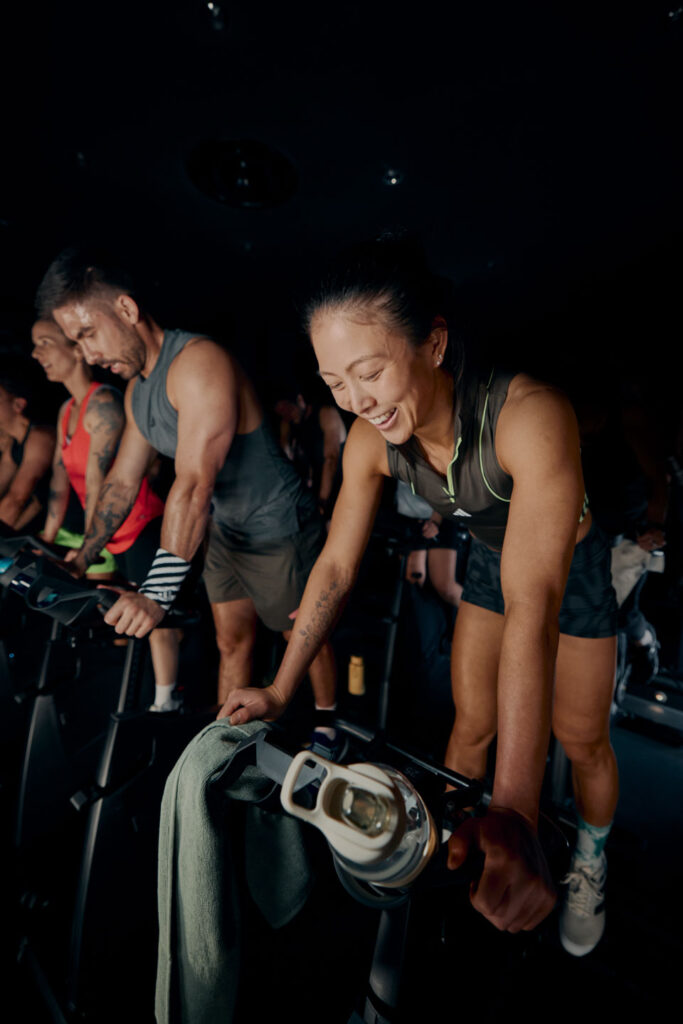
Les Mills International (LMI) programmes dominate the timetables at all our clubs, making up about 98 per cent of all classes. LMI also uses our clubs to pilot new concepts, meaning ideas can be tested quickly and, if they aren’t going to work, fail fast. Not everything can be a success, but there’s an exciting appetite across both sides of the business to explore, innovate, move and create new things.
The LMI innovation team is inspired by global trends, but we’re also part of the conversation, increasingly approaching LMI to design programmes we believe our members would like or to help fine-tune the offering in a particular studio.
Tell us about ‘boutique in a box’.
The boutique experience is something we’ve really invested in since we came out of COVID. The innovation has been world-class and I believe pivotal to our continued success; had we not done it, I don’t think the business would be where it is now.
Our immersive cycle experience – with its 25m-wide screen, dark lighting and incredible sound system – includes THE TRIP®, SPRINT and RPM. We also have Progressive Cycle in Auckland, a new programme we’re testing with LMI.
CEREMONY® is our functional, athletic training boutique – an F45 type of workout, but really beautifully curated and with great attention to detail around music, lighting and the environment in general. We’ve focused on how people feel within the workout. It’s gone absolutely gangbusters; where it exists in our clubs, 36+ per cent of members have attended a CEREMONY.
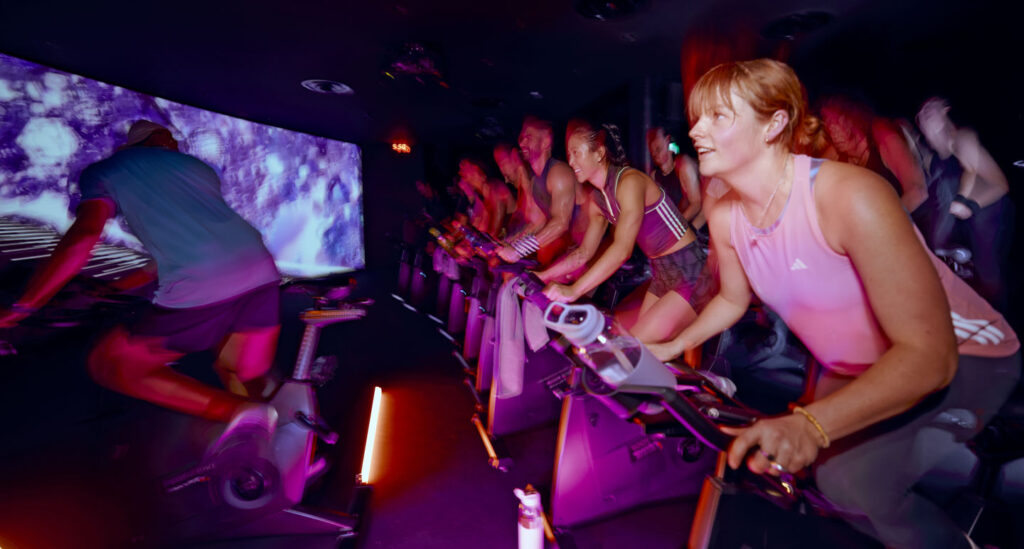
CONQUER® is our boxing-based boutique experience, where similar to CEREMONY we use spotlights and darkness to create a mood and sense of anonymity. You focus on yourself and get into your own workout with your own bag.
Across all three – across all our group fit studios, in fact – we obsess over sound quality, with an in-house AV specialist ensuring it feels immersive, rich, balanced, inspiring, uplifting and with great base. It has to feel like you’re at a concert. It has to make you want to be there.
“We obsess over sound quality. It has to feel like you’re at a concert. It has to make you want to be there.”
Auckland City – our 6,500sq m flagship – is the only club that has all our offerings, but we’re rolling out our boutiques wherever we can. In the space of two-and-a-half years, we’ve gone from one to five clubs with CEREMONY and three to nine clubs with immersive cycling, with plans to roll it out to the other three.
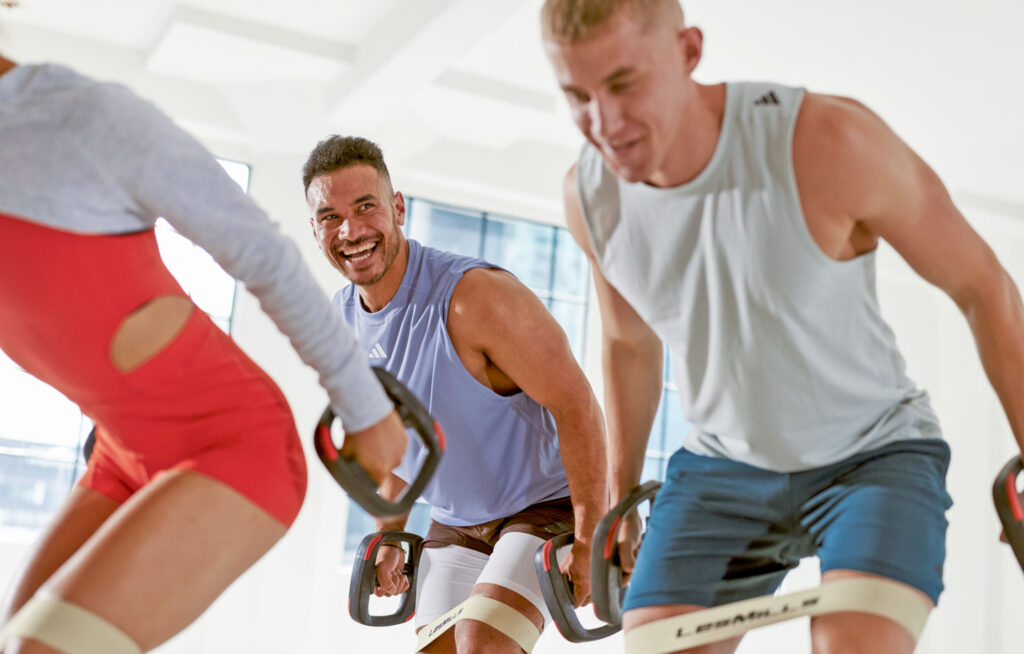
Our new club in Dunedin, which opened last year, is a great example of the impact of ‘boutique in a box’. There are some lovely touches at this club, which was curated to really nurture a sense of community, but it surpassed its two-year targets within four months. CEREMONY and THE TRIP have unquestionably driven that performance.
Big box is not dead. Boutique studios don’t instantly have an advantage around community. You just have to listen to members so you know what will move the dial.
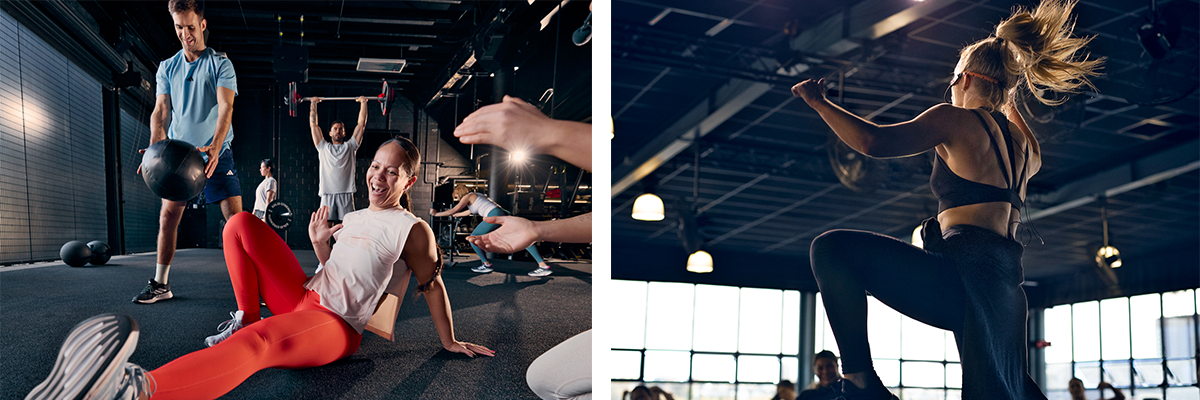
How popular is indoor cycling?
When I speak to operators in the US and Australia, I hear the same old rhetoric: that indoor cycling is dying. The pandemic likely played a role: people used indoor bikes at home and now it’s almost a case of PTSD if they try and do the same workouts as during those tough times.
However, we simply aren’t seeing this decline at our clubs, where indoor cycling has a constant presence among our top five programmes and accounts for 15 per cent of all club attendances.
In January 2024, the top five programmes across our 12 clubs combined were CEREMONY, BODYPUMP, THE TRIP, SPRINT AND RPM. In May [the latest data at the time of doing this interview], it was CEREMONY, THE TRIP, CONQUER, SHAPES and SPRINT. Cycling is absolutely holding its own.
“Big box is not dead. You just have to listen to members so you know what will move the dial.”
THE TRIP is the hero, though, and central to the continued success of cycling at our clubs. It accounts for 9 per cent of all club attendances and draws a broad audience. If you add off-peak virtual TRIP classes – without an instructor and using only one-third of the screen – that figure is almost 10 per cent.
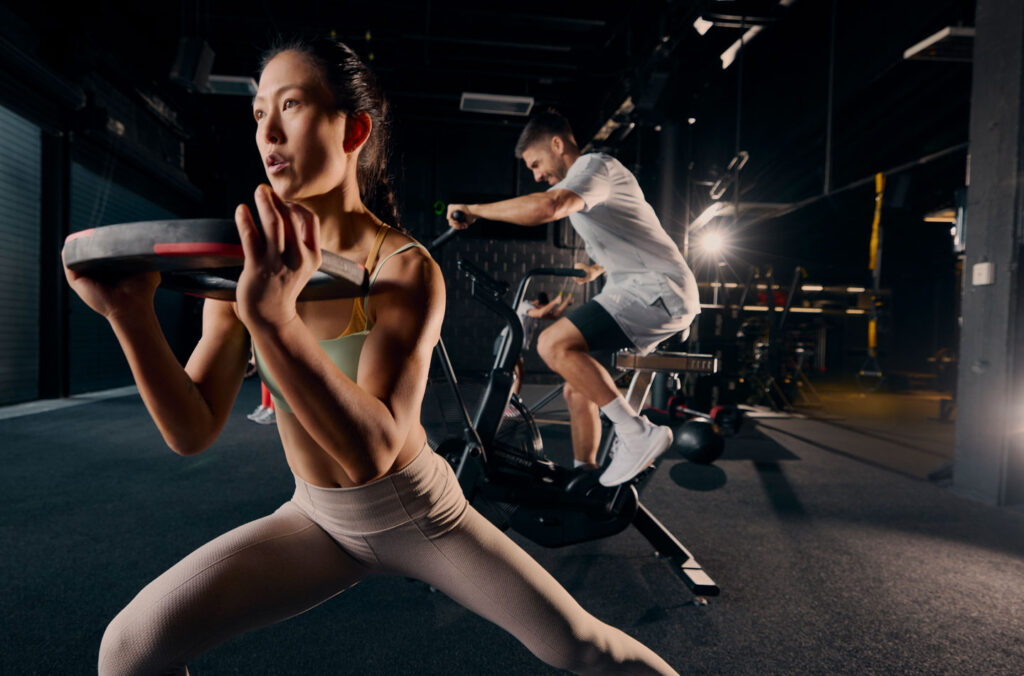
Focusing just on Auckland City, in May we delivered 210 instructor-led cycle classes and 112 off-peak virtual cycling classes, with double the number of THE TRIP classes compared to SPRINT and RPM.
We have 85 BODY BIKES in that Auckland studio and for peak time classes in May, THE TRIP had an attendance level of 80+ per cent of capacity, while SPRINT achieved 70+ per cent. Several classes in both categories of cycle reached capacity over the period.
What’s the secret of this success?
There are a few important factors, starting with our investment in immersive environments: all our clubs that have immersive cycle studios perform better than those that don’t.
Take Taranaki Street as an example. It used to do 300–350 rides a week. Now, with an immersive studio, it does 1,200–1,300. The immersive screen is used in all classes, not just THE TRIP; in RPM and SPRINT, it’s used to project colours or images and create a mood.
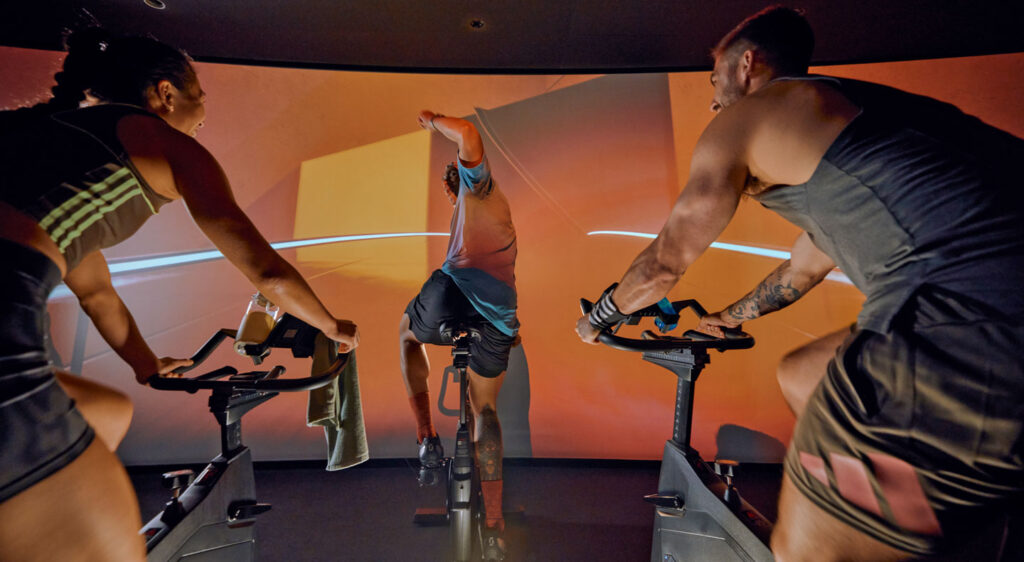
The quality of our music curation is another big one, as is the quality of our instructors. LMI’s cycle programme director Glen Ostergaard still instructs classes in Auckland, for example. That’s aspirational for other instructors, who challenge themselves to be as good. It creates other champions.
And crucially, we keep checking in to make sure cycling is still delivering. We don’t ever take for granted that our investment will continue to pay back. We are endlessly obsessive about the music, the environment, the delivery.
“Indoor cycling has a constant presence among our top five programmes and accounts for 15 per cent of all club attendances”
Progressive Cycle is a good example of our continued innovation: a new programme where, rather than up and down, sprint and climb, you sit in the burn with continued resistance for longer periods. The music is also different from our other cycle programmes. It’s in pilot at Auckland City, with two classes on the timetable each week, and it’s delivering impressive numbers so far.
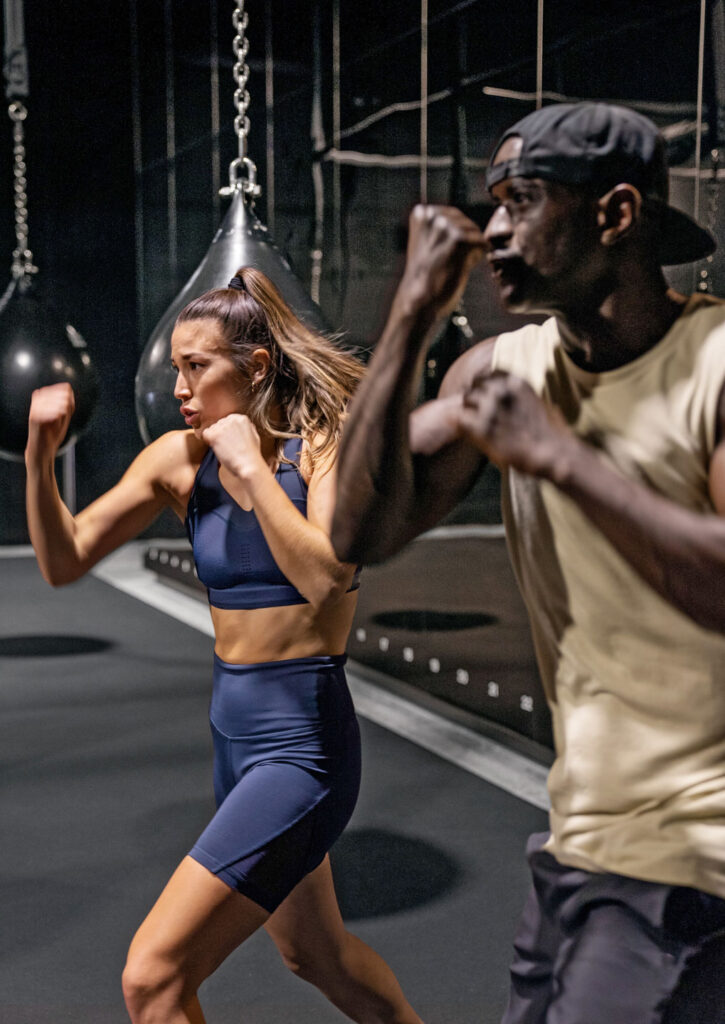
Any other trends you’re exploring?
Wellness and mind-body is an important one. LMI’s pilates-inspired workout SHAPES has already gone gangbusters in our clubs. Created as part of a new Limited Edition series, there was outcry from our members when we took it off the timetable; we had to put it back on again. The other Limited Edition category, Strength Development, is also proving popular.
“THE TRIP is central to the continued success of cycling at our clubs. It accounts for 9 per cent of all club attendances.”
Then there’s recovery; we’re already exploring ways to service our members without making it too much of a niche offering. The answer is likely to be hot-cold spaces – sauna and cold plunge – within our changing rooms.
I’m also really excited by the prospect of exploring our customer journey and rebuilding it using human-centred design. We’re already asking our members about the moments that matter to them. We cannot assume we know what they want: we have to ask. And we have to really, really listen to what they say.
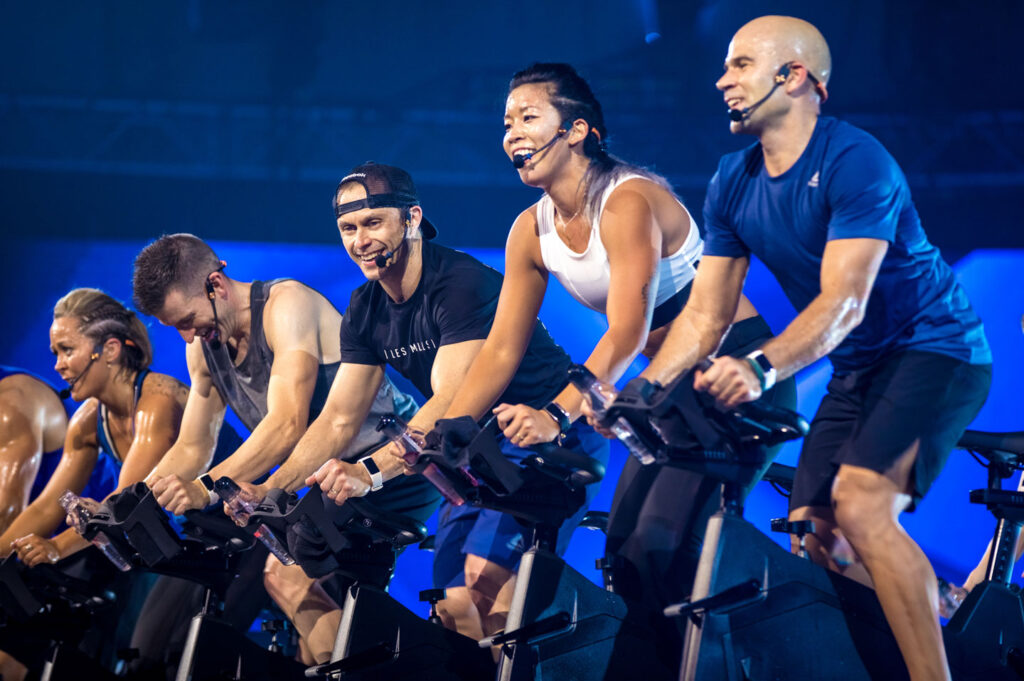
Paco Gonzalez
Paco, how did you first discover indoor cycling?
I used to be a bodybuilder, competing nationally and internationally, so it used to be all about weights for me. That was also the focus of my gym in Tenerife, which I opened in 1992. Even in other gyms, there wasn’t much of a group exercise scene in those days. You had aerobics and that was about it.
I first came across indoor cycling in 1997, when I visited a bodybuilding show in the US. There was a small trade show on the side, where Johnny G was promoting Spinning and leading a few small classes. I was fascinated and instantly knew I wanted it for my gym. At no point did I plan to become an instructor myself, though. I was still all about muscles then!
It was love at first pedal. There and then, in that first class, I decided to become an indoor cycling instructor.
Returning to Tenerife, I set about creating a dedicated cycling studio in my gym; I’m pretty sure it was the first in the Canaries. I bought 11 bikes, including one for the instructor, from Technosport – the Keiser distributor for Spain – and created a dark space with disco lights.
I instinctively knew I wanted a party atmosphere in the studio. Everyone knows how to pedal, which gives you the scope to have a bit of fun.
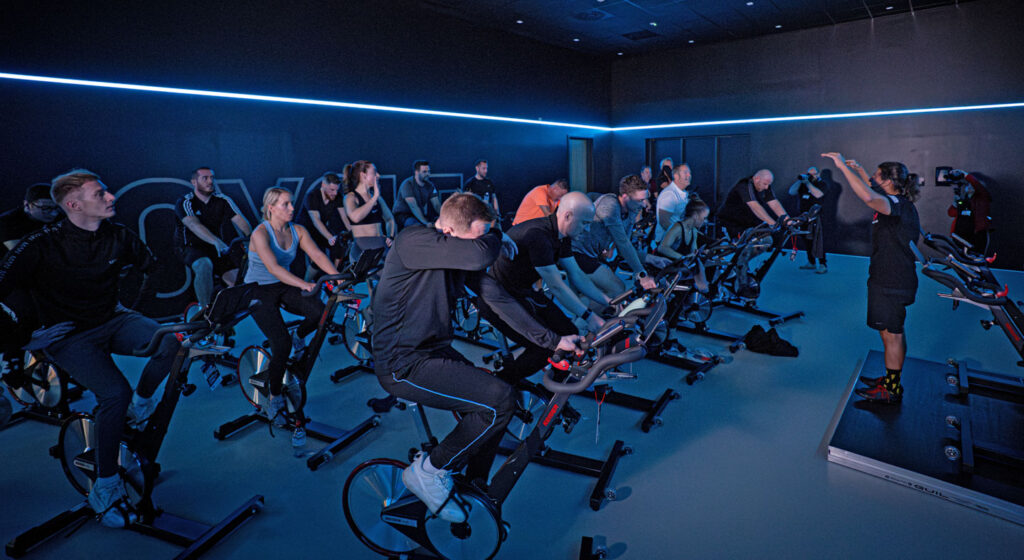
Technosport sent its master trainer, Kim Forteza, to train my team and run a masterclass. He was incredible, opening my eyes to endurance training. I’m living proof that muscle doesn’t turn to fat if you keep training!
I still wasn’t planning to become an instructor, but at training the next day, there was a spare bike. Kim encouraged me to jump on and the rest is history. It was love at first pedal. There and then, in that first class, I decided to become an indoor cycling instructor.
What’s your role now?
I’ve been with Keiser for 25 years, initially as master trainer, now as Latin American sales and education director and cardio product specialist.
It all started at a fitness convention in 1998. All day, classes were running late, so attendees who arrived for the session after mine found themselves in my class instead. I was a new instructor, but I had 1,000 people on bikes in front of me. It felt like a big party – and Dennis Keiser was watching.
I’ve taken classes in more than 65 countries and seen almost everything that’s happened in indoor cycling
The short version: that same year, Keiser sent me to Mexico to negotiate a distribution deal and from then on, I travelled the world as the company’s master trainer. In the process, I’ve taken classes in more than 65 countries and seen almost everything that’s happened in indoor cycling.
One experience that really stands out in my memory was a day spent on top of a mountain in Brazil – at an event called Pedalando no Topo – instructing six classes of 500 people over the course of the day. I did that event every year from 2011–2017. It was fantastic!
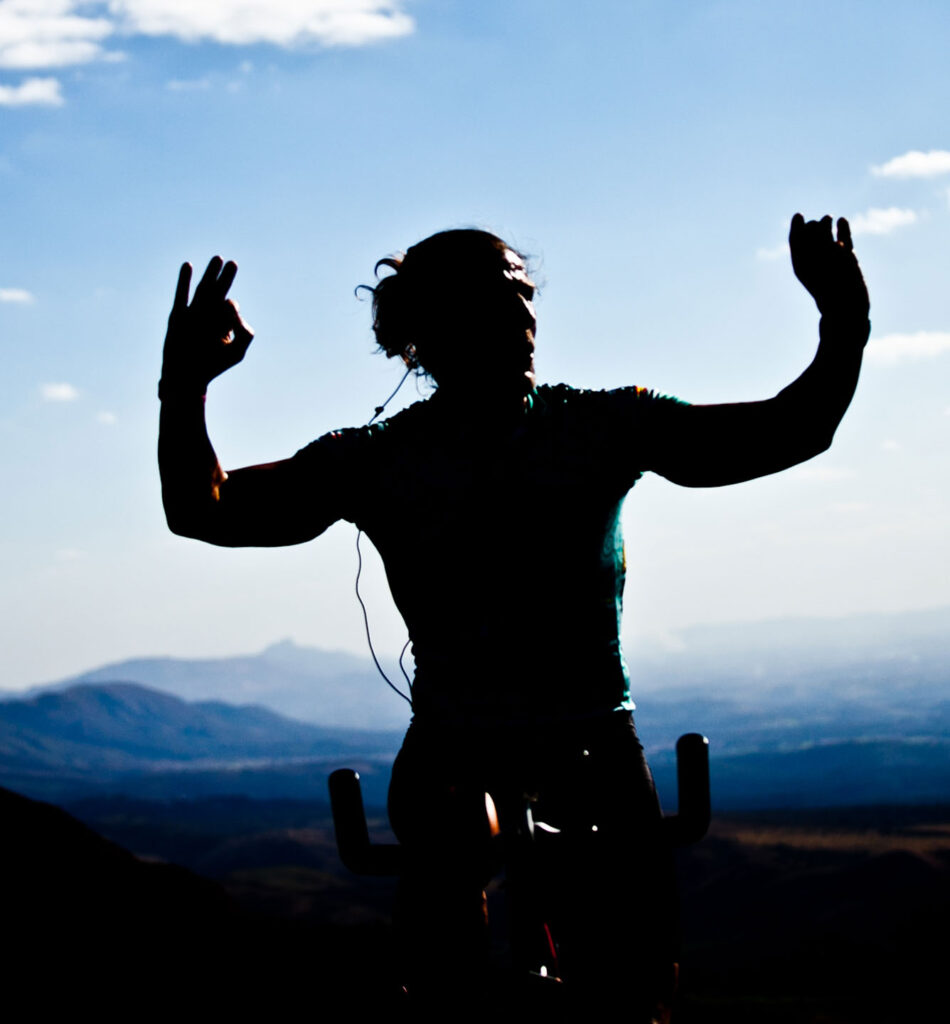
How has indoor cycling evolved?
When I started, it really was about the bike and the instructor. Music was also important, but it was tricky: we were working from cassettes and mini-discs. I had an advantage though: prior to doing a degree in human nutrition and a masters in physiology, my original degree was in media production. I’d never used it, but suddenly I came full circle, putting my knowledge of music mixing and media visuals to good use.
The physical and emotional feeling of teaching a class as an instructor… it’s hard to put into words
Looking at indoor cycling today, things have changed. It’s no longer just about the bike and the instructor, but about the ecosystem and the environment. Classes are smaller, but they’re experience-based. Data, technology and connectivity play a major role. Studio design and AV systems are hugely important. You have so many more tools as an instructor now and you have to know how to use them to sell the experience. It’s about entertainment, entertainment, entertainment.
The instructor is still important, but very few people are specialist now: there are so many choices when it comes to group exercise nowadays, meaning instructors tend to be good in several disciplines rather than exceptional in one.
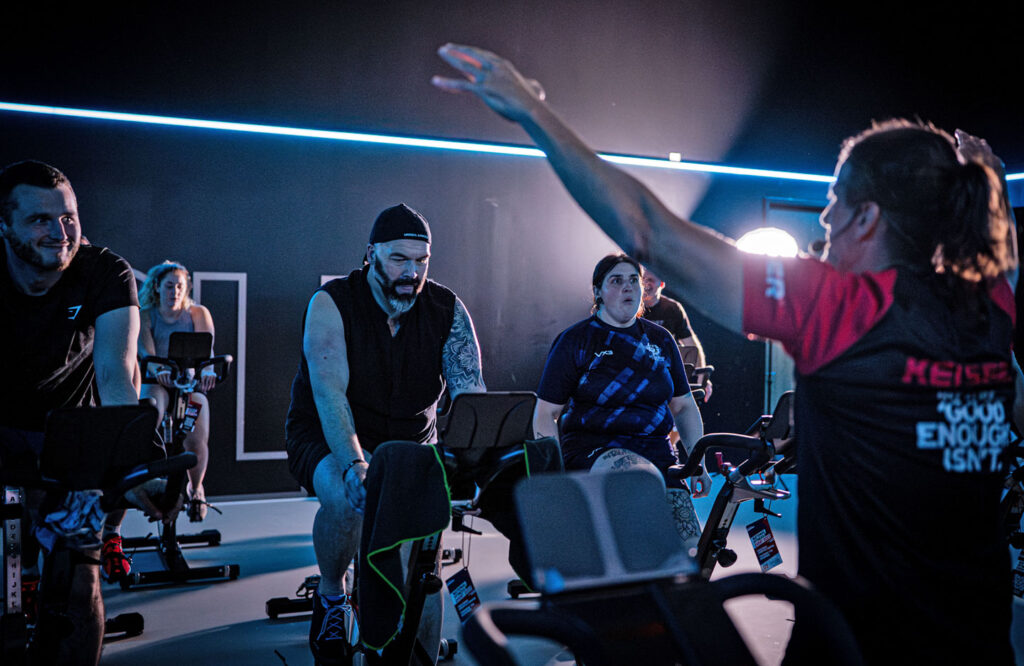
What makes a great instructor?
You don’t have to be a specialist to be a great instructor, but there are some essentials you must tick off.
If you want participants to enjoy your classes, you have to enjoy them yourself – to visibly thrive off sharing your knowledge and your emotions. You’re not going to inspire a passion in others if they don’t see you loving what you’re doing, although always remember you’re there to train the participants, not to train yourself.
Indoor cycling is a group experience, so why don’t we embrace that in the way we use data?
That direct contact with riders is certainly the thing I miss most in my role now. The physical and emotional feeling of teaching a class as an instructor… it’s hard to put into words and I’m sure I will return to it one day.
You also have to understand physiology and programming so you can design great classes. Yes, you must deliver an entertaining, enjoyable experience, but you aren’t only there to put a smile on people’s faces. You’re also there to help them achieve tangible physical results.
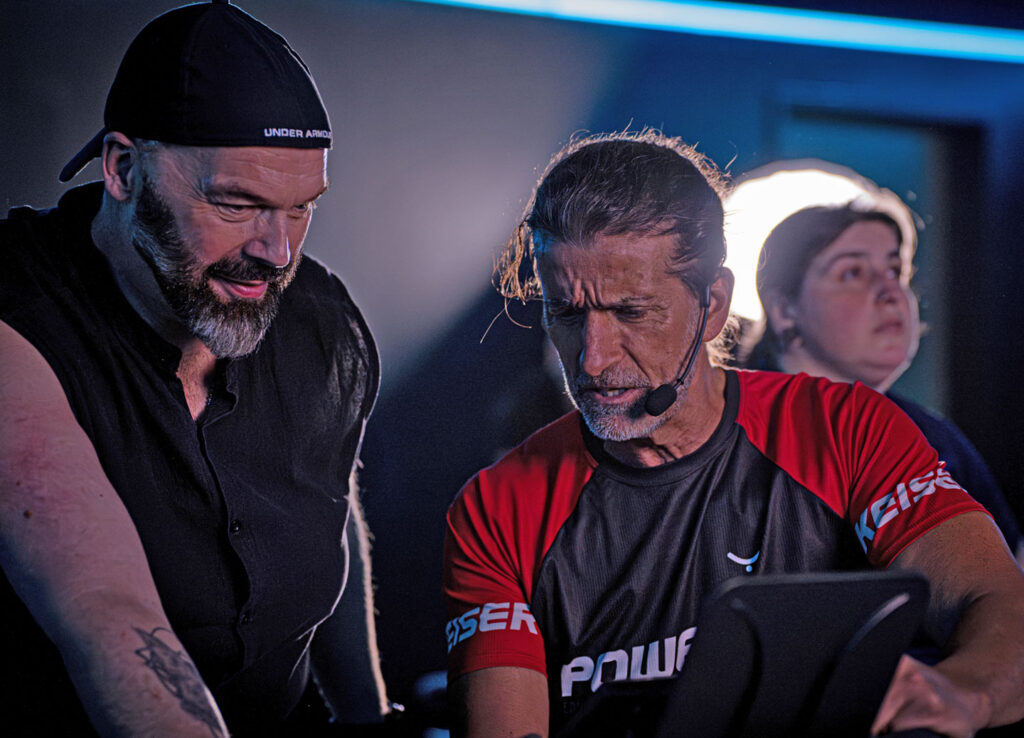
Of course, there are some excellent pre-choreographed programmes and that’s great for generalist trainers who spend their whole day between the gym floor and the studio. Honestly, when do they have time to create their own high-quality programmes and playlists?
However, I personally struggle to use someone else’s programmes. When I design a class, I put all my energy and emotions into the workout and the music. That really shows when I come to deliver it. I find it hard to interpret and deliver a class I didn’t create.
Perhaps most important of all, however experienced you are as an instructor, you have to keep learning. The day you think you know everything, you know nothing. Every country and city I go to, I do a class as a participant. I take in what the instructor is doing, how they’re using music and so on. It’s the best way to learn and continually improve.
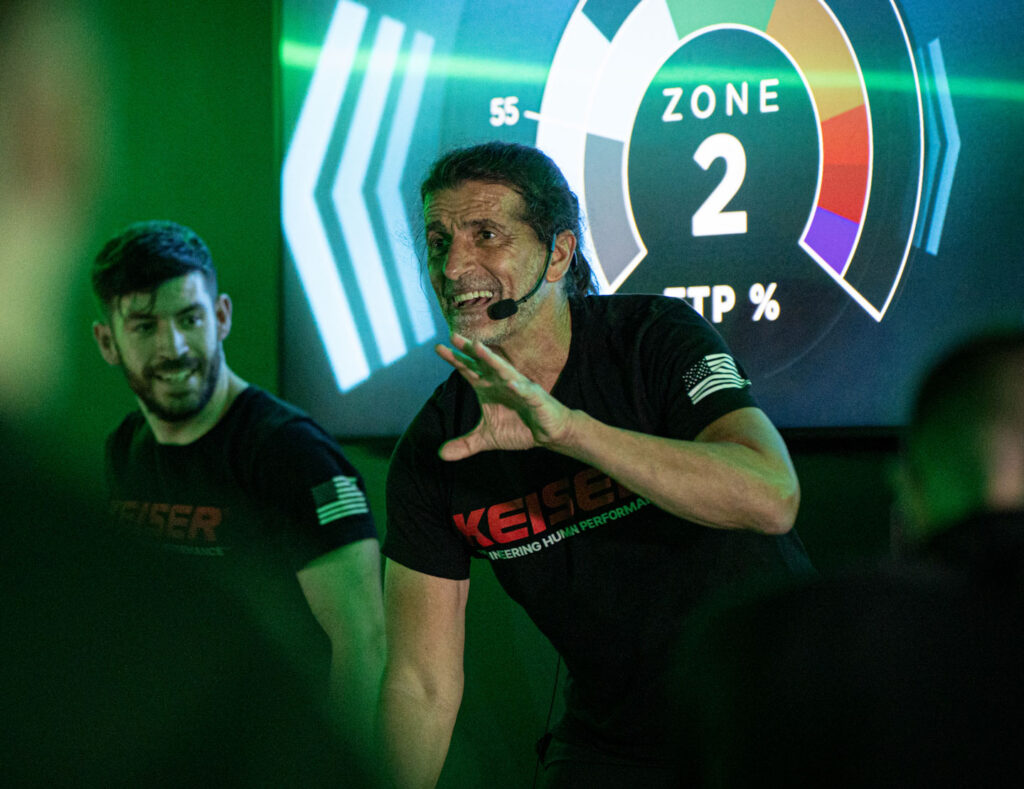
What’s the future of indoor cycling?
We now live in a data-led world. It’s all about connectivity, with technological innovations and class personalisation transforming the way people connect with indoor cycling.
I’m excited by the use of digital applications and platforms, allowing instructors to offer rides that suitably challenge different skill levels and personal goals within the same class.
Anyone who says indoor cycling is dying doesn’t know what they’re talking about. It’s very much alive.
That said, I’m not convinced we currently use data in the best way. Do we need to see each individual’s data on a big screen at the front of the class? Indoor cycling is a group experience, so why don’t we embrace that in the way we use data? Why not set a goal for the whole class – generating 10,000 kilojoules of energy to power the studio lighting, for example – and have that target on the big screen, with everyone working together to achieve it?
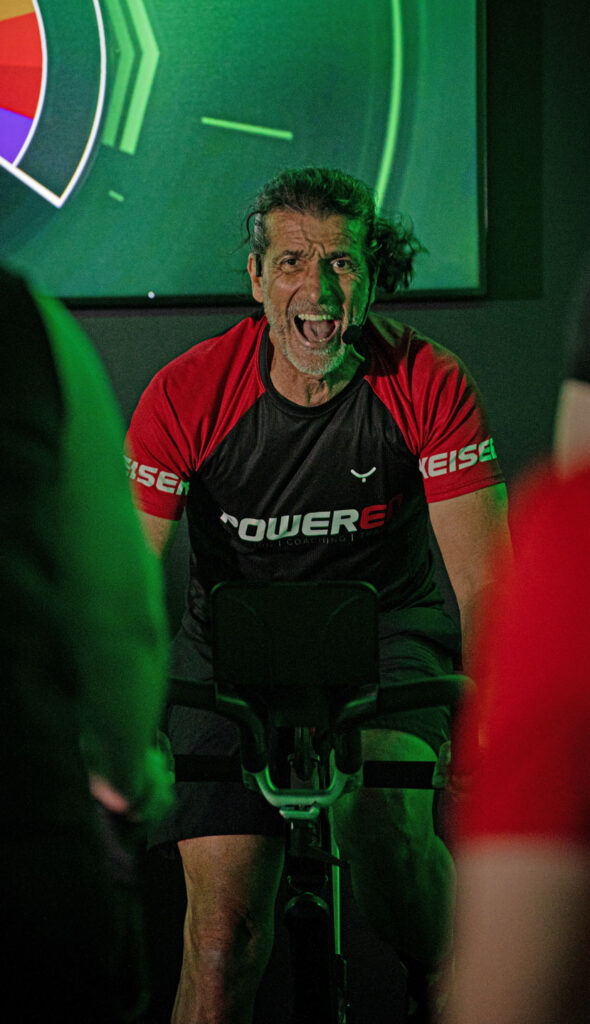
I am pleased by the way indoor cycling is becoming more inclusive and accessible, with a growing number of studios adopting online and on-demand classes. Meanwhile, in-person, the supportive community aspect of indoor cycling continues to motivate people around the world, led by instructors who enthuse, inspire and fuel emotions.
One thing is for sure: anyone who says indoor cycling is dying doesn’t know what they’re talking about. It’s very much alive, with markets such as Brazil, Spain and the UK leading the way.
Redefining a rockstar
“We need to make ‘indoor cycling instructor’ a job worth doing well; I’d like it to count for something on a CV”
If I asked you to describe the perfect indoor cycling class, what would you say? For me, it’s always about the instructor – but crucially, it’s not about their prowess or their performance in the saddle. It’s about how they make me feel.
It’s why I was so delighted to read the interview with Melissa Power, where she airs her concerns over indoor cycling’s breed of rockstar instructor.
She explains: “Of course you want a great instructor, but what actually defines ‘great’ is how they make participants feel. It absolutely isn’t about using class to show off what they can do.” Hear, hear Melissa.
The other trend she takes issue with is unsafe riding. To quote her again: “TikTok and Instagram have popularised double time, but it’s unsafe and bad for the joints.” At her Cadence studio, choreography is “mostly there as a break from power”.
This is music to my ears. Power has to be at the heart of training, even if presented in a less scientific way. It can’t just be about dancing on a bike.
Paco Gonzalez agrees, viewing indoor cycling as ‘undercover training’ where people get great results even while having fun. In his interview he offers his advice to a new generation of instructors: “You aren’t only there to put a smile on people’s faces. You’re also there to help them achieve tangible physical results.”
Paco is truly a rockstar in all the right ways: full of empathy, infectious enthusiasm and a passion he’s desperate to share. We need more of this in our sector – and it starts, I believe, by recognising the responsibility operators have to the young instructors in their clubs.
We need to make ‘indoor cycling instructor’ a job worth doing well; I’d like it to count for something if a young person has GX instructor on their CV, just as it does if they’ve been in the armed forces. Let’s properly educate them and focus on the leadership, customer service and motivational skills they learn. Let’s show them a progression pathway that harnesses these skills.
Above all, let’s encourage them to look to the likes of Melissa Power and Paco Gonzalez for their role models, rather than the TikTok influencers.
The payback will be significant, both for us and for them.
Uffe A. Olesen
CEO, Body Bike International A/S

